Inbox and Environment News: Issue 465
September 6 - 12, 2020: Issue 465
Time of Ngoonungi
The Time of Ngoonungi - Murrai'yunggory — cool, getting warmer (September-October) in the D'harawal calendar of Indigenous Weather Knowledge begins this week. This is the time of the gathering of the flying foxes. A magical time of the year when the flying foxes gather in the darkening skies over D'harawal Lands. They come in from the north-east, the north, the north-west and the west, and swirl over the Sydney area in a wonderful, sky-dancing display just after sunset, before setting off for the night-time feeding grounds to the south.
It is also a very important ceremonial time for the D'harawals, which begins with the appearance of the splashes of the bright red Miwa Gawaian (Telopea speciosissima - waratah) in the bushland.
Waratah (Telopea speciosissima) photos by Selena Griffith - Residents do not state where they have seen these glorious flowers as there are people who come to pick them and steal them for profit. Native plants are protected in New South Wales by the Biodiversity Conservation Act 2016 (BC Act). Under the BC Act it is an offence to pick, possess, buy or sell native plants listed in the Act for commercial purposes without a licence.
Visit: A Bunch Of Wildflowers: Historical Spring September Songs
The D'harawal Country and language area extends from the southern shores of Port Jackson (Sydney Harbour) to the northern shores of the Shoalhaven River, and from the eastern shores of the Wollondilly River system to the eastern seaboard.
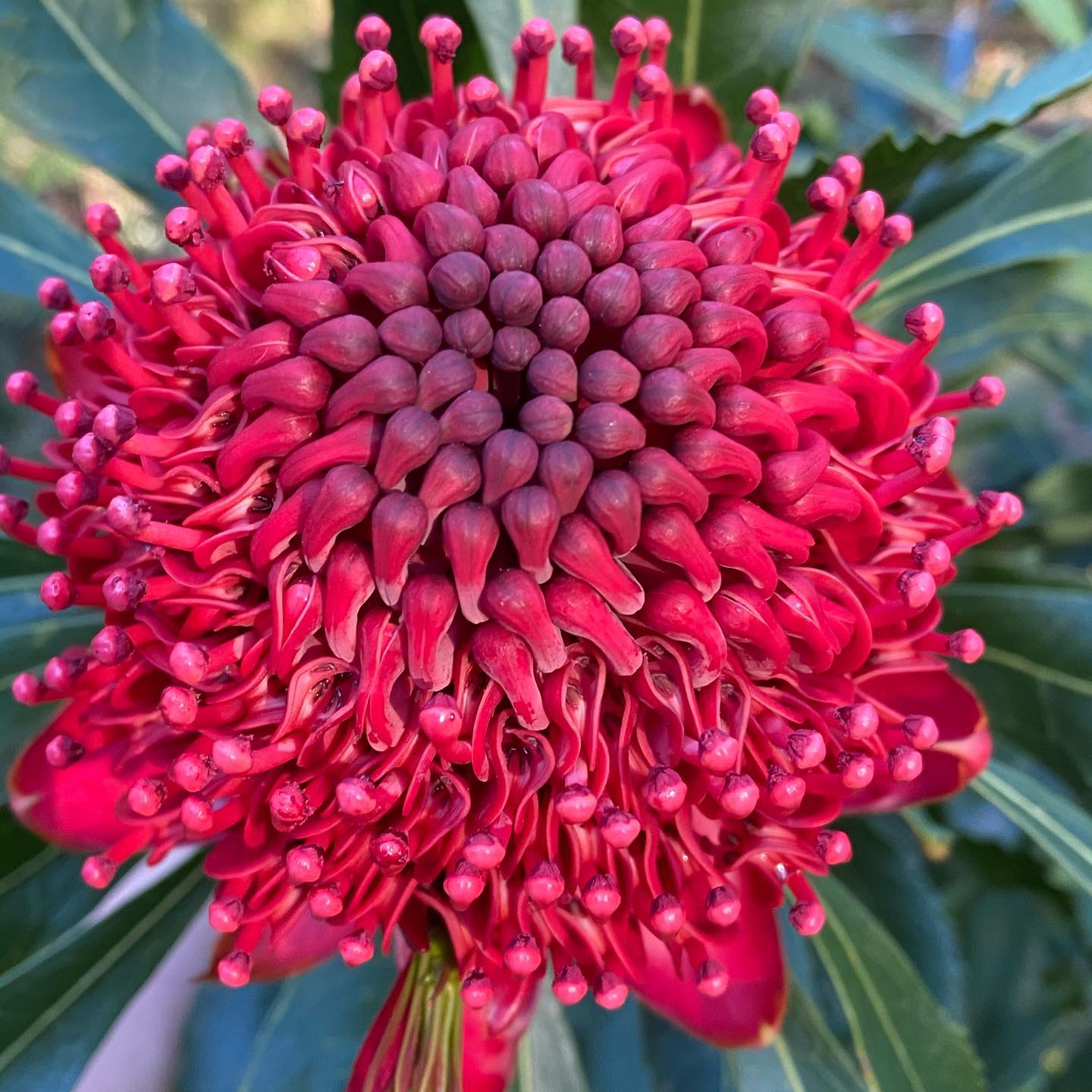
This Issue In Pictures Bairne Walking Track, Ku-Ring-Gai Chase National Park - Photos By Kevin Murray
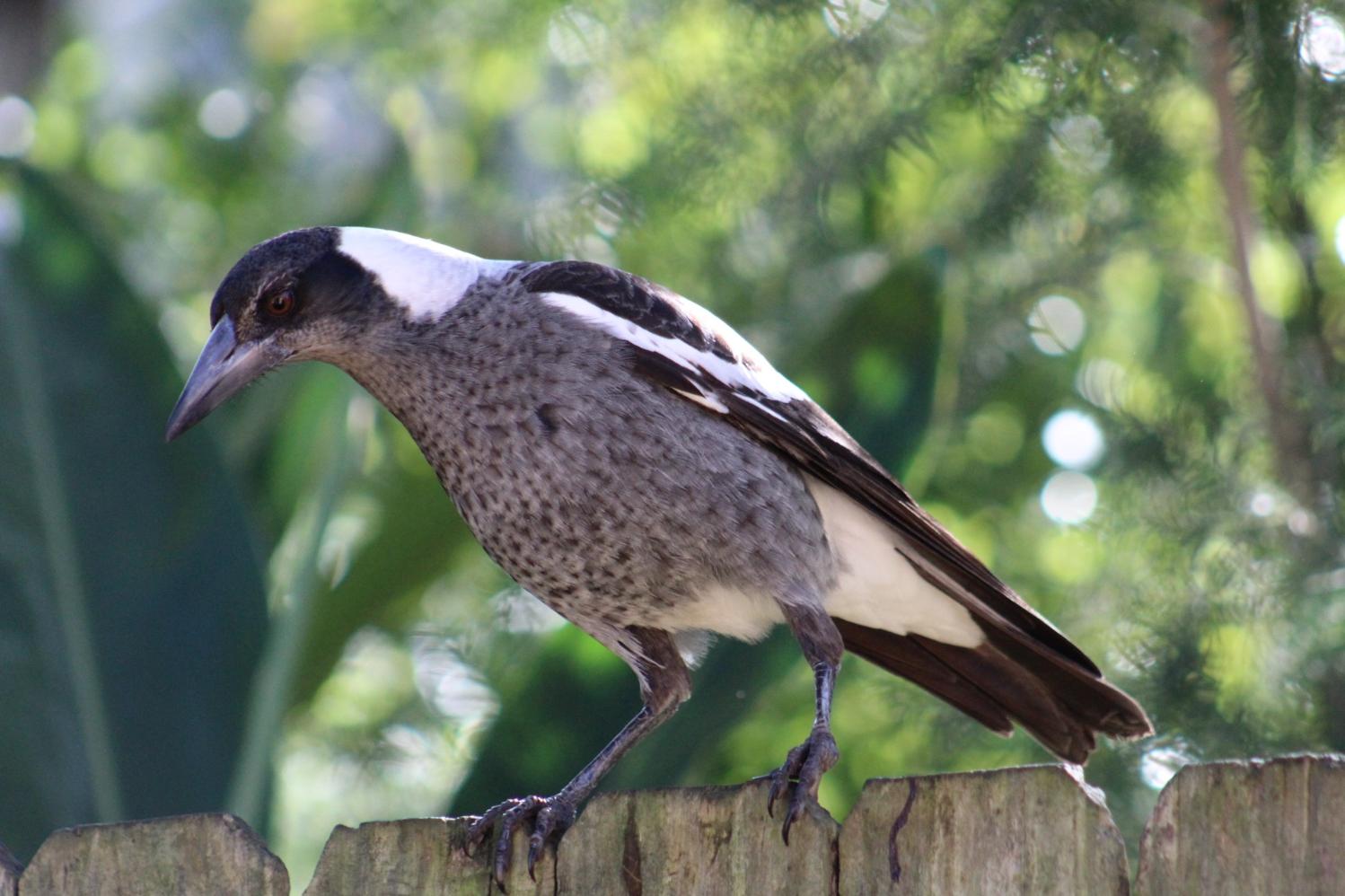
Council's Crown Reserve Land Categorisation: Seeking Your Input
Submissions Close Sunday October 4th, 2020
Council are proposing land categories for 35 Crown reserves as part of an obligation under the Crown Land Management (CLM) Act 2016. The CLM Act legislates that we are required to manage Crown land in the same manner as Community land, in accordance with the Local Government Act 1993.
This is an initial land categorisation process and only relates to current/existing use. It does not propose any change of use for the subject Crown reserves or indicate desired future use.
How to have your say
Council would like your thoughts on their proposed categorisation of these reserves.
To make commenting easier, they've presented the Proposed Crown Reserve Land Categories here in an interactive PDF document. You can also download the whole document here.
If you prefer, you can share your feedback in the submission form or via email council@northernbeaches.nsw.gov.au.
Feedback is also accepted in writing marked 'Crown reserve land categorisation' PO Box 82, Manly NSW 1655.
A few tips to get you started:
- Do you know of other factors impacting on the categorisation of a particular reserve?
- If you think another category would be more suitable, please let us know why.
- Any proposed variation to land categories must be justified in line with the category objectives.
Following this process, Council can then prepare new or updated Plans of Management (PoM) for the affected reserves. The relevant community engagement requirements and process will be followed at that time.
Background
In NSW, Crown land is administered by the Department of Planning, Industry and Environment in accordance with the Crown Land Management (CLM) Act 2016, which came into effect on 1 July 2018. Following an extensive review of how Crown land is managed, the CLM Act was passed in order to create a more simplified management structure.
The CLM Act requires Crown reserves managed by Council to be managed in line with the Local Government Act (LG) Act 1993 in the same manner as Council Community land. The transition requires the affected Crown reserves to be managed via a plan of management (PoM). The first step is to assign the appropriate land categories.
The transition to managing Crown reserves in accordance with the LG Act is to occur by June 30th 2021.
On June 23rd 2020 Council resolved to undertake community consultation on the proposed land categories. Comments will be reported back to Council with a recommendation, along with a summary of community feedback. The Minister will be notified of Council’s preferred categories and, following confirmation from the Minister, PoMs can be prepared.
Katandra Season 2020
Katandra Bushland Sanctuary on Lane Cove Rd Ingleside is now open every Sunday until October 25, 10am-4pm. Visitors to this lovely bushland have recently seen Powerful and Boobook Owls, Swamp Wallabies and Lyrebirds. Visitors, please make a small donation towards management of this Crown Land reserve. More details: http://www.katandra.org/home.htm
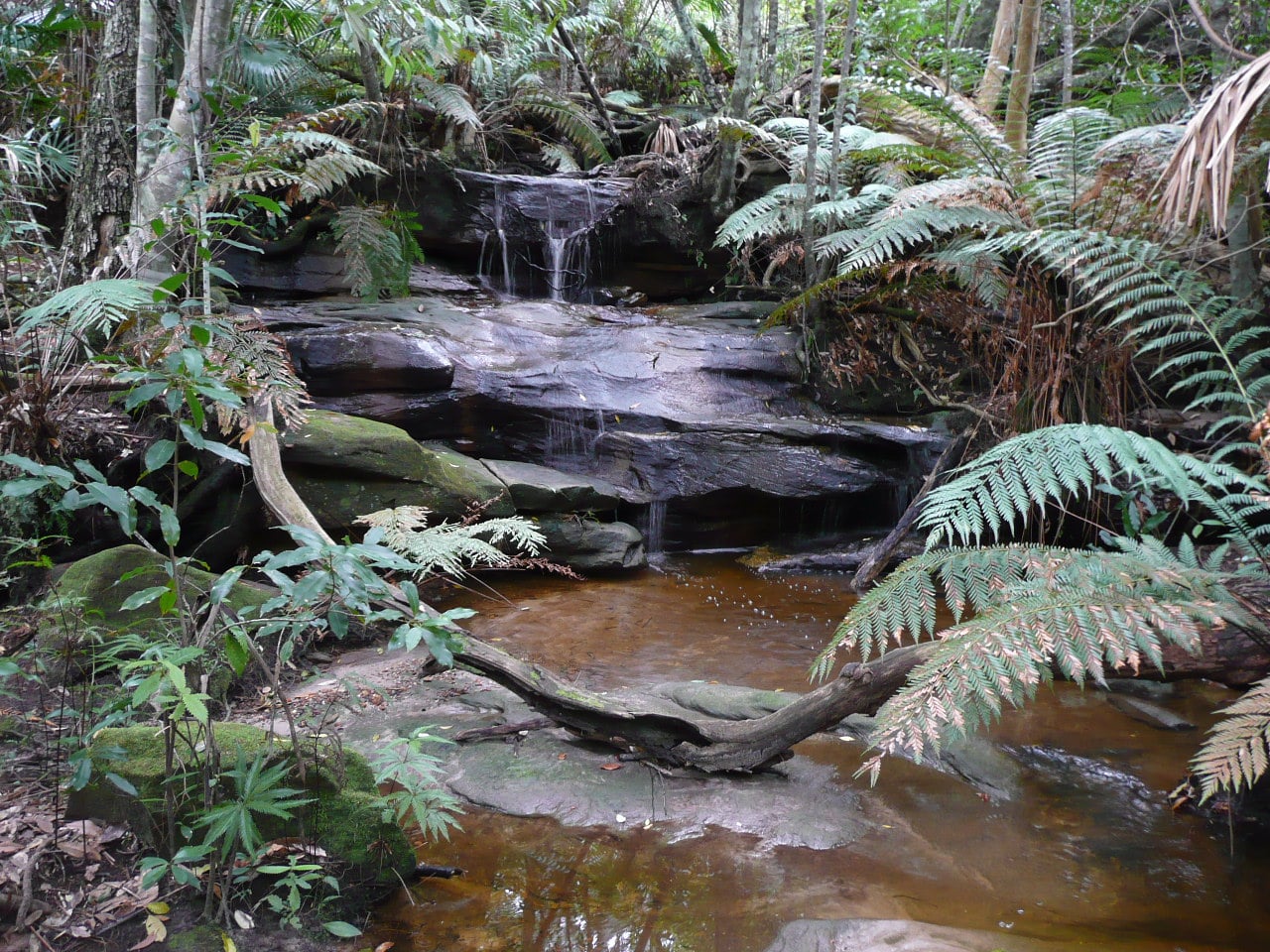
Several creeks flow down the escarpment - photo by Marita Macrae
Morrison Government Introduces The Words 'Coal' + 'Coal Mining' Into Federal Environment Protection And Biodiversity Conservation Act: Shuts Down Debate On Proposed Amendments
On the last sitting day of Federal Government this week the incumbents showed what Zali Steggall, MP for Warringah has described as a ''disdain for both the environment and the Parliamentary process'' – ramming through controversial legislation without proper debate.
The Government’s Environment Protection and Biodiversity Conservation Amendment (Streamlining Environmental Approvals) Bill 2020 was heavily criticised by numerous environment groups and has introduced the words 'coal' and 'coal mining' a total of six times into the EPBC - leading some to observe this underlines the current government's approach to its custodianship of the environment for this and future generations - in that there is no environment or wildlife - there is only coal mines and coal mining.
''The legislation will negatively impact environmental protection and biodiversity conservation in Australia and did not reflect recommendations of the Samuel review – which is still yet to be completed. I therefore prepared and circulated amendments that sought to make positive changes to stop water resources being mismanaged and contaminated by coal mining and coal seam gas developers.'' Ms Steggall stated on Friday (September 4).
''My amendments also implemented the recommended National Environmental Standards which would be strong safeguards for the environment. But the Government not only cut short debate, they over-rode the proper Parliamentary process and prevented me from even moving my amendments.''
''Many long term Parliamentarians in the Opposition were left dumbfounded by this move. Most shocking – and disappointing - was the conduct of some Coalition members in the Chamber – laughing and chuckling as longstanding Parliamentary process was ignored and environmental protection done away with. I would be surprised if this is how people expect to be represented, especially the people of Mackellar, North Sydney and Wentworth where I know they care about the environment. Their members were there, laughing.'' Ms Steggal said.
On Friday the Law Council of Australia called for a parliamentary inquiry into this Bill. The Law Council of Australia (Law Council) is the peak national representative body of the Australian legal profession. The Law Council is a federal organisation representing 65,000 Australian lawyers through their bar associations and law societies and Law Firms Australia (the Constituent Bodies). It works for the improvement of the law and of the administration of justice.
The organisation warned that the Environment Protection and Biodiversity Conservation Amendment (Streamlining Environmental Approvals) Bill 2020 (the Bill) must not be rushed through the Senate and has called for its referral to a parliamentary inquiry.
The Bill is intended to streamline environmental approvals under the Environment Protection and Biodiversity Conservation Act 1999 (the Act) by facilitating ‘the legally robust devolution of environmental approvals to the states and territories’.
''The Law Council maintains its longstanding view that the Commonwealth should be demonstrating leadership in biodiversity conservation and environmental protection, given its unique role sitting at the apex of government in Australia and its independence of particular State and Territory interests.'' the body said in a statement.
Law Council President Pauline Wright said: “Australia is a signatory to some 33 key treaties and protocols regarding the environment. The Commonwealth Government must remain at the helm in ensuring that Australia’s obligations under those treaties and protocols are met.”
“Bilateral agreements should not operate without robust and comprehensive Commonwealth oversight which is necessary to ensure that the Australia’s obligations under international treaties are met and public confidence and trust is maintained.”
“This is particularly important in the context of the protection of Australia’s many World Heritage Listed sites, which include not only sites of outstanding environmental value but also sites of sacred value and importance to Australia’s First Nations peoples.”
In his independent review of the Act, Professor Graeme Samuel AO has proposed the devolution of decision making from the Commonwealth to the states and territories, but within a broader reform platform, including the development of clear, legally enforceable National Environmental Standards combined with a strong assurance framework.
The Law Council stresses the importance of placing approvals of bilateral agreements within a strong assurance framework that clearly demonstrates how the Commonwealth Government will ensure that its obligations under international law will be met.
“This assurance framework must be clear, transparent to the public and properly developed. We have an independent inquiry that has not even had the chance to complete its final report and reflect on over 3000 unique submissions by concerned people and organisations. We must let that run its due course before embarking on this significant change.”
“We must also have regard to the outcomes of the current Parliamentary inquiry into the destruction of caves at the Juukan Gorge and the protection of Indigenous cultural heritage. A Senate inquiry into the Bill must accommodate these broader processes by allowing the public time to consider and reflect on their findings.”
The Federal Environment Minister, The Hon Sussan Ley MP, released a statement the same day what some have already dubbed 'the Coal Environment Bill' was passed by the Federal Liberal Party chapter.
''The Bill includes minor technical amendments to the EPBC Act. They are the start of a process that is entirely consistent with Professor Graeme Samuel’s interim report and his findings in relation to an Act that is long overdue for reform.'' Ms Ley said.
Professor Graeme Samuel’s interim report was released on July 20, 2020. The same day the Federal Environment Minister stated, ''This is our chance to ensure the right protection for our environment while also unlocking job-creating projects to strengthen our economy and improve the livelihoods of every-day Australians. We can do both as part of the Australian Government’s COVID recovery plan.''
''The Commonwealth will take steps to strengthen compliance functions and ensure that all bilateral agreements with States and Territories are subject to rigorous assurance monitoring. It will not, however, support additional layers of bureaucracy such as the establishment of an independent regulator.''
“This bill is a disaster in the making for wildlife and would put iconic species like koalas on the fast-track to extinction,” said Rachel Lowry, WWF-Australia’s Chief Conservation Officer on Thursday.
“The ink is barely dry on the review’s interim report, but the government is already ignoring its recommendations and rushing through changes that would gut environmental protections,” she said.
“There is more than just wildlife at stake here. If approved, this bill will fail Australians at this critical moment in time because it fails to incentivise win-win solutions that stimulate our economy and protect the places and animals we love.”
“Shifting approval powers to the states without an independent regulator to ensure enforcement, would be the most damaging environmental decision to occur within Australia in recent decades.
“The government should heed the expert advice of its reviewer Graeme Samuel and establish an independent ‘cop on the beat’ to ensure the laws that protect Australia’s nature are followed.”
Ms Lowry said that more than 60 environmental organisations as well as leading Australian scientists have sought to secure independent compliance and strong standards during the review process.
“The capacity of the EPBC Act to achieve real environmental outcomes will stand or fall on compliance and resourcing. It must be correctly resourced to do the job and stop Australia’s worsening extinction crisis,” she said.
“Destruction of koala habitat has actually accelerated since the iconic marsupial was listed as vulnerable under the EPBC Act. It’s hardly surprising that koalas are sliding towards extinction across Eastern Australia. This is our moment in time to stop, rather than accelerate that decline.”
WWF-Australia has joined forces with the Australian Conservation Foundation, the Wilderness Society, Birdlife Australia and the Humane Society International, on a campaign calling for laws that actually protect nature before it's gone.
“Australia has suffered its worst bushfires in living memory, with over three billion native animals killed or displaced. The animals that survived this disaster need our protection now more than ever,” said Ms Lowry.
“We have a once-in-a decade opportunity to turn things around for our struggling wildlife. We must strengthen our nature laws and ensure they are properly enforced without political interference.
Two scientific studies this year, one published in March, the other as we go to press, have found in surveys conducted in fire grounds across NSW that 70% of all koalas have been lost. These follow on from studies leading into these fires that found some previously healthy and robust populations were effectively extinct.
The Federal Senate also sits again in October, when the 'Coal Environment Bill' will come before the house.
Professor Samuel’s Final Report, including recommendations to government, is due to be delivered to the Minister for the Environment by 31 October 2020.
The Proposed key reform directions outlined in his interim report are:
- The Commonwealth should continue to focus on existing areas of responsibility with no expansion to regulate new environmental matters.
- New, legally enforceable National Environmental Standards should be established to deliver ecologically sustainable development. Focused on outcomes rather than process.
- Streamlining and greater efficiency through devolution in a way that provides community confidence, with National Environmental Standards as the foundation to set the outcomes needed regardless of who the decision maker is.
- Strong and transparent assurance to ensure devolved decisions deliver the intended outcomes.
- Australia’s Indigenous cultural heritage laws need to be reviewed and more work is needed to support better engagement with Indigenous Australians and to respectfully incorporate Traditional Knowledge of Country in how the environment is managed.
- Build trust in the system through increased transparency of information and decision-making to reduce the need to resort to court processes to discover information. Legal challenges should be limited to matters of outcome, not process.
- A quantum shift in the quality of information is needed, so that the right information is available at the right time for the community, proponents and decision-makers. This will deliver better decisions, and faster and lower cost assessments and approvals.
- A coherent framework to monitor and evaluate the effectiveness of the EPBC Act is needed, including revamped State of the Environment reporting.
- Restoration of the environment must be a focus. Available habitat needs to grow to be able to support both development and a healthy environment. Explore ways to accelerate environmental restoration such as markets and co-investing with the philanthropic and private sectors.
- An independent compliance and enforcement regulator that is not subject to actual or implied political direction. It should be properly resourced and have a full toolkit of powers.
The Forest Flora Of New South Wales: 1917
Bushcare In Pittwater
Where we work Which day What time
Avalon
Angophora Reserve 3rd Sunday 8:30 - 11:30am
Avalon Dunes 1st Sunday 8:30 - 11:30am
Avalon Golf Course 2nd Wednesday 3 - 5:30pm
Careel Creek 4th Saturday 8:30 - 11:30am
Toongari Reserve 3rd Saturday 9 - 12noon (8 - 11am in summer)
Bangalley Headland 2nd Sunday 9 to 12noon
Bayview
Winnererremy Bay 4th Sunday 9 to 12noon
Bilgola
North Bilgola Beach 3rd Monday 9 - 12noon
Algona Reserve 1st Saturday 9 - 12noon
Plateau Park 1st Friday 8:30 - 11:30am
Church Point
Browns Bay Reserve 1st Tuesday 9 - 12noon
McCarrs Creek Reserve Contact Bushcare Officer To be confirmed
Clareville
Old Wharf Reserve 3rd Saturday 8 - 11am
Elanora
Kundibah Reserve 4th Sunday 8:30 - 11:30am
 Mona Vale
Mona Vale Mona Vale Beach Basin 1st Saturday 8 - 11am
Mona Vale Dunes 2nd Saturday +3rd Thursday 8:30 - 11:30am
Newport
Bungan Beach 4th Sunday 9 - 12noon
Crescent Reserve 3rd Sunday 9 - 12noon
North Newport Beach 4th Saturday 8:30 - 11:30am
Porter Reserve 2nd Saturday 8 - 11am
North Narrabeen
Irrawong Reserve 2nd Saturday 2 - 5pm
Palm Beach
North Palm Beach Dunes 3rd Saturday 9 - 12noon
Scotland Island
Catherine Park 2nd Sunday 10 - 12:30pm
Elizabeth Park 1st Saturday 9 - 12noon
Pathilda Reserve 3rd Saturday 9 - 12noon
Warriewood
Warriewood Wetlands 1st Sunday 8:30 - 11:30am
Whale Beach
Norma Park 1st Friday 9 - 12noon
Western Foreshores
Coopers Point, Elvina Bay 2nd Sunday 10 - 1pm
Rocky Point, Elvina Bay 1st Monday 9 - 12noon
Gardens And Environment Groups And Organisations In Pittwater
Tick Population Booming In Our Area
Residents from Terrey Hills and Belrose to Narrabeen and Palm Beach report a high number of ticks are still present in the landscape. Local Veterinarians are stating there has not been the usual break from ticks so far and each day they’re still getting cases, especially in treating family dogs.
To help protect yourself and your family, you should:
- Use a chemical repellent with DEET, permethrin or picaridin.
- Wear light-colored protective clothing.
- Tuck pant legs into socks.
- Avoid tick-infested areas.
- Check yourself, your children, and your pets daily for ticks and carefully remove any ticks using a freezing agent.
- If you have a reaction, contact your GP for advice.
Sydney Sights 'Invisible' Blue Whale
September 4, 2020
The NSW National Parks and Wildlife Service (NPWS) confirms the recent sighting of a blue whale off Sydney is extremely rare and possibly only the third to be seen off Sydney in nearly 100 years. (Pittwater Online August 2020)
NPWS' Andrew Marshall said that this giant of the sea may have been over 25 metres in length and weighed over 100 tonnes.
"The blue whale is the largest animal on the plant yet despite its size it could have easily slipped by Sydney's coast unnoticed," said Mr Marshall.
"Blue whales are largely 'invisible' even to the most avid whale watchers and researchers as the creature is very rarely seen around the world.
"They are not often seen because they tend to live very far out to sea, their populations are widely dispersed and we have very limited data on its migration and critical habitat.
"We have unofficial records of blue whales near Sydney from observers at Cape Solander in 2002 and 2013 but this recent sighting is the first verified record of this species off our coast," said Mr Marshall.
Unlike the humpback whale which is showing signs of an annual population recovery of around 10-11%, the blue whale population in NSW's waters remains elusive.
"That's why opportunistic sightings like this one are so incredibly valuable," said Mr Marshall.
"They improve our understanding of where these species live and suggest if there are measures we need to consider to try to protect them."
Sightings like this and of the rarely seen Blainville's beaked whale on the Central Coast in July are helping NPWS and other marine mammal experts continue to grow their understanding of whale species.
There are plenty of whale watching vantage points from our national parks in Sydney and right along the coast. Visitors are reminded to be COVID safe and always check the NPWS website for alerts before visiting a national park.
People can help whales by reporting sightings of injured or entangled animals, to NPWS on 13000 PARKS or the ORRCA (Organisation for the Rescue and Research of Cetaceans in Australia) hotline 02 9415 3333.
Wildflower Bonanza For Pilliga
September 4, 2020
The best wildflower season for several years is unfurling in the Pilliga as higher than average rainfall sets the scene for a spectacular spring.
National Parks and Wildlife Service (NPWS) Team Leader Ranger, Rita Enke, said the signs were already looking good, with a multitude of natives beginning to flower.
"Hardenbergia, boronia and wattles are already flowering and the buds of grevilleas, heaths, billy buttons, bluebells and various pea flowers are starting to burst," she said.
"Delicate orchids such as pink fingers, waxlip and donkey orchids are also getting ready for a spectacular display, which is great to see as orchids need really specific conditions and some years, they don't flower at all.
"With soils still moist from a wet winter, this year is shaping up to be a wildflower bonanza.
"I'm expecting the peak to be the second and third weeks of September. The weather's warming up and it's a great time to go for a bushwalk.
"There's no shortage of birds currently out and about so don't forget your binoculars," said Ms Enke.
Annabel Greenup from Bilby Blooms nursery said she has been watching wildflower events in the Pilliga for several years and expects this year to be a standout.
"This season will be a spring wonderland, with a huge diversity of species flowering and an array of colours," she said.
"More than 50 species of flowering plants can be viewed on a short walk in the Pilliga, such as Sandstone Caves or Sculptures in the Scrub.
"The Iconic Pilliga daisy has already started to flower and will carpet the ground in some areas. Keep an eye out for carnivorous sundews in damp areas".
The wildflower wonderland is expected to stretch right across reserves in western NSW from September until early Summer.
Check the website before you travel and remember to book if you're coming for more than a bushwalk: NSW National Parks and Wildlife Service
New Renewable Energy Campaign Targets Bright Sparks In Morrison Government
September 3, 2020
The Lock the Gate Alliance has formally launched its “Ready for Renewables” campaign in response to the Morrison Government’s unsustainable and uneconomical push for a gas-fired recovery from the Covid-19 recession.
“The principal behind this campaign is simple - clean energy is cheaper and more efficient than gas, and does not lead to the permanent destruction of land, water, and the climate,” said LTGA renewables coordinator Freja Leonard this week.
“Investing in renewables and storage, not new gasfields, is by far the more sensible way for governments to turbocharge the economy and lead us out of the Covid-19 recession, while at the same time creating an economy that is sustainable.
“Gas and fracking are a polluting and economic nightmare and are doing harm to farmlands and our water resources. Renewables are ready and we’re ready for renewables.”
Riverina-bred singer songwriter, William Crighton, will help launch the campaign with a special live performance on Lock the Gate Alliance’s Facebook page tomorrow (Friday) evening at 8pm Eastern Standard Time.
“'We have heard governments and industry talk about renewables for a long time while simultaneously marching towards more coal seam gas, and more coal,” Mr Crighton said.
“The simple truth is that the earth, our natural habitat, is being poisoned and destroyed.
“We need to change to renewable and cleaner energy. If we want any sort of future for ourselves and future generations - now is the time to act.”
Ms Leonard said, “Our farms, precious waterways and economy can’t afford to keep propping up more polluting gasfields. It’s time for Australia to grow stronger by embracing the natural advantage we have when it comes to renewable energy.
“We are telling the Morrison Government that Australia needs bold leadership to deliver a healthier future.
“Now is the time to start getting off gas, to help families and businesses secure a better future by pivoting to renewables and storage for a stronger economy and environment.”
The Key demands of the Ready for Renewables Campaign are:
- Get off the gas by stopping all fossil fuel subsidies.
- Support transition today with the creation of a National Renewable Energy Roadmap transitioning from coal and gas towards renewable energy.
- Set a better standard by committing to the National Energy Market sourcing all of its energy from renewables.
- Help don’t hinder states and territories to source 100% of their energy from renewable sources.
- Drive leaner demand and cleaner supply by retrofitting for renewables and energy efficiency in homes and small businesses across Australia.
NSW Government Chief Scientist CSG Response Fails Farmers And Communities
The Lock the Gate Alliance states the NSW Berejiklian and Barilaro Government’s response to why it has not implemented the Chief Scientist’s recommendations on coal seam gas is inadequate.
LTGA NSW spokesperson Georgina Woods said the government’s argument was essentially that because only one CSG project was now under assessment - Santos’ Narrabri gasfield - it didn’t need to implement all of the Chief Scientist’s recommendations.
“The Chief Scientist’s recommendations were designed to mitigate the potentially destructive impacts of any CSG project. If the government had done its job, the Independent Planning Commission would not now be expected to make a decision about the Narrabri gasfield on the basis of guess work and blank cheques when it comes to crucial issues like groundwater, salt waste, and fugitive methane," she said.
“The Berejiklian and Barilaro Government’s response also ignores the 56,000 square kilometres of land in the north west that is covered by ‘zombie licences’ - CSG exploration licences that would likely be reactivated should the Santos Narrabri gasfield project go ahead.
“The government has let this threat hang over the farmland and water resources of the region, failed to follow through on its own promises and the recommendations of its Chief Scientist, and is now saying it will wait for the threat to get bigger before acting. It’s disgraceful.
“The inquiry specifically recommended that triple-bottom-line Strategic Release Framework be applied to the expired zombie coal seam gas licences hanging over North West New South Wales but the Berejiklian and Barilaro Government has weaseled out and the message to North West farmers is that the threat they face isn’t big enough to bother addressing.
“As it stands, the government has utterly failed to implement the recommendations that were meant to keep NSW residents and water resources safe from CSG - at least nine of the 16 recommendations are either incomplete, partially complete, inadequate, or have been abandoned entirely.
“The government will leave the scientific and regulatory work recommended by the Chief Scientist incomplete until it’s too late and it’s farmers in the North West that will pay the price for that neglect.”
Morrison government plan to scrap water buybacks will hurt taxpayers and the environment
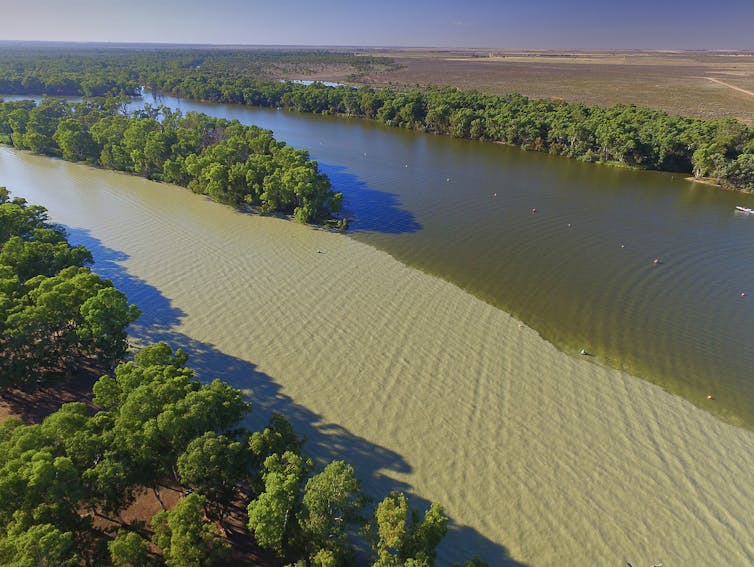
The Morrison government today declared it will axe buybacks of water entitlements from irrigators, placating farmers who say the system has damaged their livelihood and communities.
Instead, Water Minister Keith Pitt says the government will scale up efforts to save water by upgrading infrastructure for farming irrigators in the Murray Darling Basin.
The move will anger environmentalists, who say water buybacks are vital to restoring flows to Australia’s most important river system. It also contradicts findings from the government’s own experts this week who said farm upgrades increase water prices more than buyback water recovery.
The government has chosen a route not backed by evidence, and which will deliver a bad deal to taxpayers and the environment.

A Brief History Of Water Buybacks
Farmers along the Murray Darling are entitled to a certain amount of river water which they can use or sell. In 2008, the federal Labor government began buying some of these entitlements in an open-tender process known as “buybacks”. The purchased water was returned to the parched river system to boost the environment.
In 2012, the Murray Darling Basin Plan was struck. It stipulated that 2,750 billion litres of water would be bought back from irrigators and delivered to the environment every year. The buyback system was not universally supported – critics claim buybacks increase water prices, and hurt farmers by reducing the water available for irrigation.
The Coalition government came to office in 2013 and adopted a “strategic” approach to water buybacks. These purchases were made behind closed doors with chosen irrigators.
In a review of these buybacks released last month, the Australian National Audit Office found many of these taxpayer-funded deals were not good value for money.
The federal government ordered the review after controversy involving the 2017 purchase of water from two Queensland properties owned by Eastern Australia Agriculture.
The government paid A$80 million for the entitlements – an amount critics said was well over market value. The deal was also contentious because government frontbencher Angus Taylor was, before the purchase, a non-financial director of the company. The company also had links to the Cayman Islands tax haven.
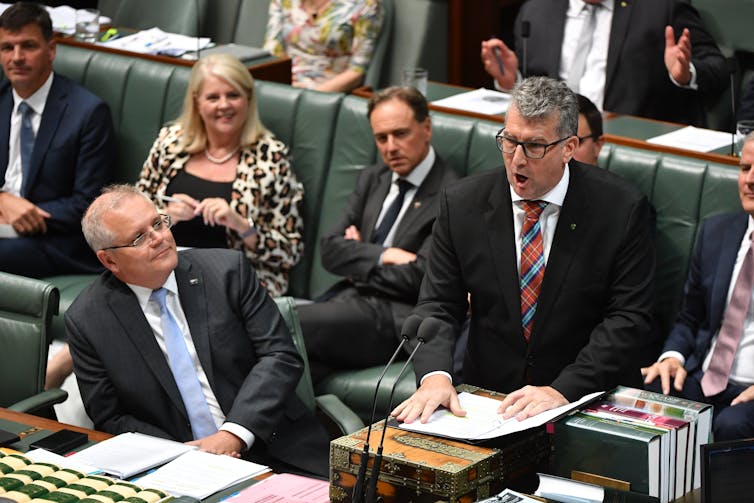
Infrastructure Subsidies: A Flawed Approach
The Coalition government is taking a different approach to recover water for the environment: subsidising water infrastructure on farms and elsewhere. This infrastructure includes lining ponds and possibly levees to trap and store water.
The subsidies have cost many billions of dollars yet recover water at a very much higher cost than reverse tenders. This approach also reduces the water that returns to streams and groundwater.
Read more: Australia, it's time to talk about our water emergency
The justification for water infrastructure subsidies is that they are supposedly less damaging to irrigation communities. But the Australian Bureau of Agricultural and Resource Economics and Sciences (ABARES) concluded in a report published this week that on-farm water infrastructure subsidies, while beneficial for their participants, “push water prices higher, placing pressure on the wider irrigation sector”. This is the very sector the subsidies purport to help.
So why would the government expand the use of water infrastructure when it costs more and isn’t good value for money? The answer may lie in this finding from the ABARES report:
Irrigators who hold large volumes of entitlement relative to their water use (and are frequently net sellers of water allocations) may benefit from higher water prices, as this increases the value of their entitlements.
Farmers with limited entitlement holdings however may be adversely affected, as higher water prices increase their costs and lowers their profitability.
In other words, the “big end of town” benefits – at taxpayers’ expense – while the small-scale irrigators lose out.
Missing Water
Adding insult to injury, the Wentworth Group of Concerned Scientists released a detailed report this week showing the basin plan is failing to deliver the water expected, even after accounting for dry weather. Some two trillion litres of water is not in the rivers and streams of the basin and appears to have been consumed – a volume that could be more than four times the water in Sydney Harbour.
The Wentworth Group says stream flows may be less than expected because environmental water recovery has been undermined by “water-saving” infrastructure, which reduces the amount of water that would otherwise return to rivers and groundwater.
This infrastructure, on which taxpayers have spent over A$4 billion, has not had the desired effect. Research has found those who receive infrastructure subsidies increased water extractions by more than those who did not receive subsidies. That’s because farmers who were using water more efficiently often planted thirstier crops.
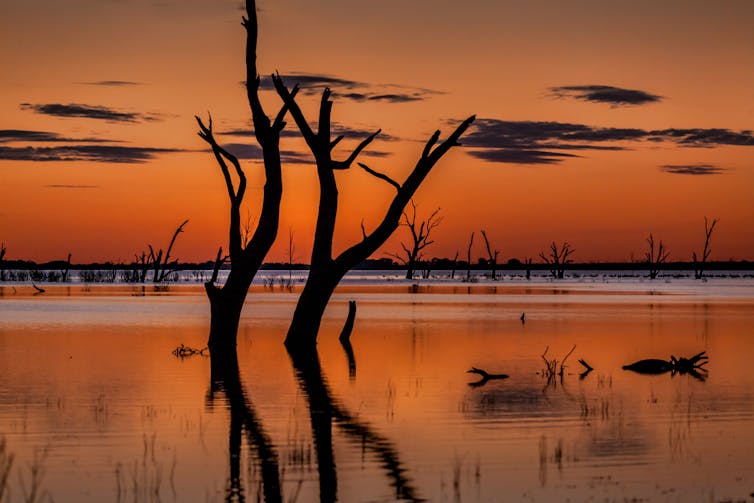
We Deserve Better
It’s clear taxpayer dollars are much better spent buying back water entitlements, through open tenders, rather than subsidising water infrastructure. We can, and must, do much better with water policy.
Today, the federal government has doubled down on wasteful spending at taxpayer expense – in a time of a COVID-induced recession.
So what is on offer from the Morrison government? Continuing to ignore its own experts’ advice and delivering yet more ineffective subsidies for water infrastructure. Our rivers, our communities, and all Australians deserve much better.
Quentin Grafton, Director of the Centre for Water Economics, Environment and Policy, Crawford School of Public Policy, Australian National University
This article is republished from The Conversation under a Creative Commons license. Read the original article.
New research reveals these 20 Australian reptiles are set to disappear by 2040
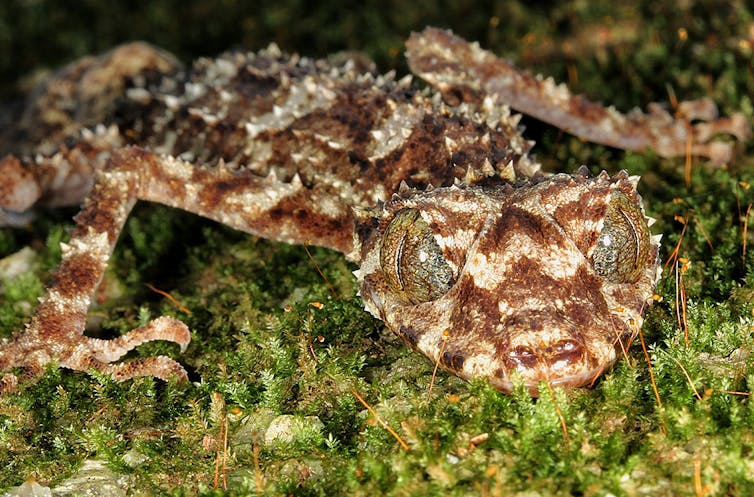
Action came too late for the Christmas Island forest skink, despite early warnings of significant declines. It was lost from the wild before it was officially listed as “threatened”, and the few individuals brought into captivity died soon after.
Australia is home to about 10% of all known reptile species — the largest number of any country in the world. But many of our reptiles are at risk of the same fate as the Christmas Island forest skink: extinction.
In new research published today, we identified the 20 terrestrial snakes and lizards (collectively known as “squamates”) at greatest risk of extinction in the next two decades, assuming no changes to current conservation management.
While all 20 species meet international criteria to be officially listed as “threatened”, only half are protected under Australian environmental legislation— the Environment Protection and Biodiversity Conservation (EPBC) Act. This needs urgent review.
Many of these reptiles receive little conservation action, but most of their threats can be ameliorated. By identifying the species at greatest risk of extinction, we can better prioritise our recovery efforts — we know now what will be lost if we don’t act.
Six Species More Likely Than Not To Go Extinct
Our research team — including 27 reptile experts from universities, zoos, museums and government organisations across the country — identified six species with greater than 50% likelihood of extinction by 2040.
This includes two dragons, one blind snake and three skinks. Experts rated many others as having a 30-50% likelihood of extinction over the next 20 years.
More than half (55%) of the 20 species at greatest risk occur in Queensland. Three live on islands: two on Christmas Island and one on Lancelin Island off the Western Australian coast.
Two more species are found in Western Australia, while the Northern Territory, the Australian Capital Territory, Victoria and New South Wales each have one species.
Read more: Australia's smallest fish among 22 at risk of extinction within two decades
Each of the 20 species at greatest risk occur in a relatively small area, which partly explains the Queensland cluster — many species in that state naturally have very small distributions.
Most of the top 20 occupy a total range of fewer than 20 square kilometres, so could be lost to a single catastrophic event, such as a large bushfire.
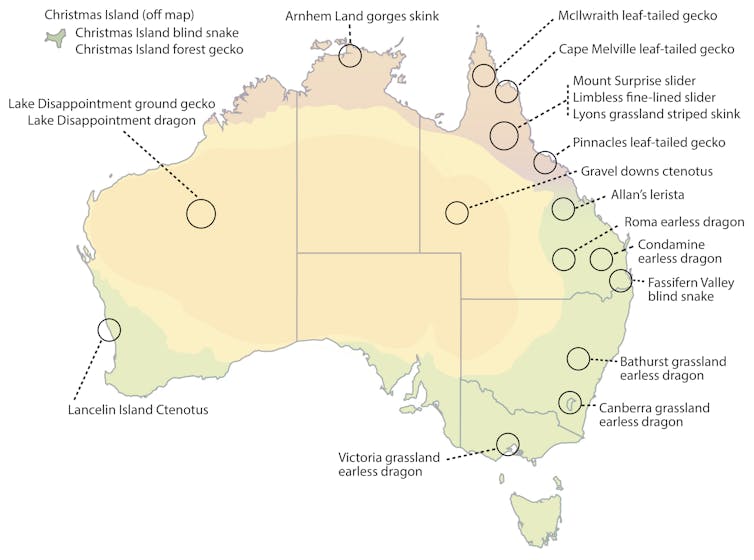
So Why Are They Dying Out?
Reptile species are declining on a global scale, and this is likely exacerbated by climate change. In Australia, where more than 90% of our species occur nowhere else in the world, the most threatened reptiles are at risk for two main reasons: they have very small distributions, and ongoing, unmitigated threats.
The Cape Melville leaf-tailed gecko meets this brief perfectly. This large and spectacular species was only discovered in 2013, on a remote mountain range on Cape York. It’s threatened by virtue of its very small distribution and population size, and by climate change warming and drying its upland habitat.
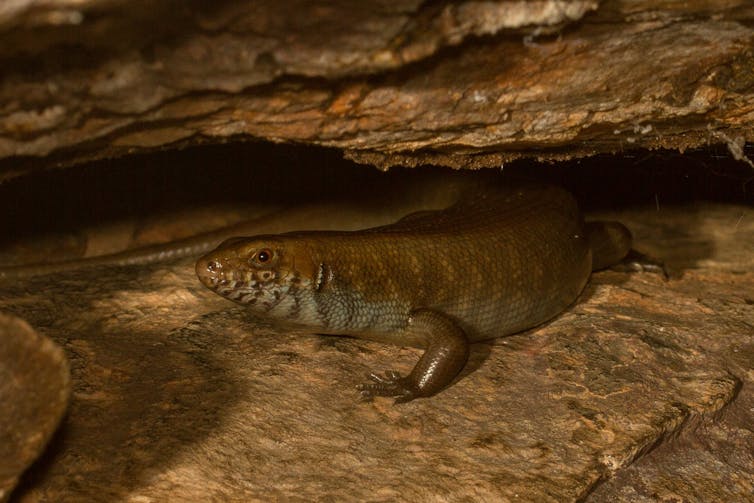
Habitat loss is also a major threat for the top 20 species. Australia’s most imperilled reptile, the Victoria grassland earless dragon, used to be relatively common in grasslands in and around Melbourne. But the grasslands this little dragon once called home have been extensively cleared for agriculture and urban development, and now cover less than 1% of their original extent.
Little Conservation Attention
For most reptile species, there has been less conservation work to address the declines, partly because reptiles have historically received less scientific attention than birds or mammals.
We also still don’t fully understand just how many species there are in Australia. New reptile species are being scientifically described at an average rate of 15 per year (a higher rate than for other vertebrate groups) and many new reptiles are already vulnerable to extinction at the time of discovery.

To make matters worse, few reptiles in Australia are well-monitored. Without adequate monitoring, we have a poor understanding of population trends and the impacts of threats. This means species could slip into extinction unnoticed.
Reptiles also lack the public and political profile that helps generate recovery support for other, (arguably) more charismatic Australian threatened animals — such as koalas and swift parrots — leading to little resourcing for conservation.
Lessons From The Past
Only one Australian reptile, the Christmas Island forest skink, is officially listed as extinct, but we have most probably lost others before knowing they exist. Without increased resourcing and management intervention, many more Australian reptiles could follow the same trajectory.
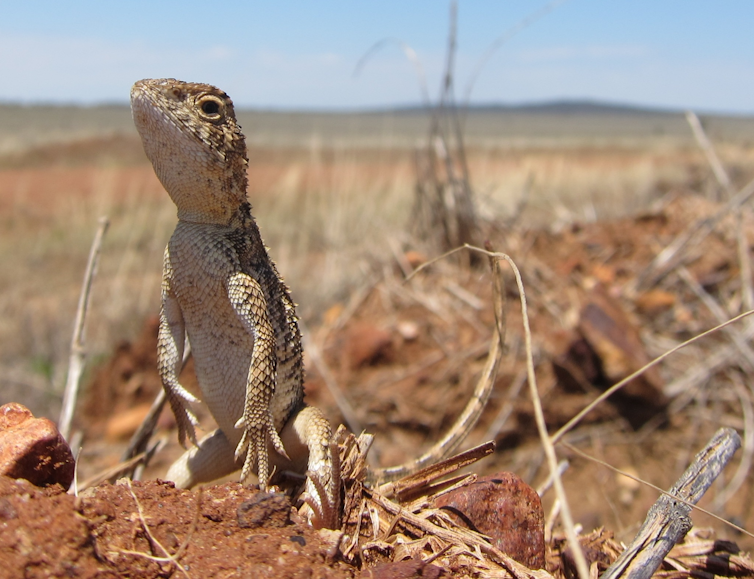
But it’s not all bad news. The pygmy bluetongue skink was once thought to be extinct until a chance discovery kick-started a long conservation and research program.
Animals are now being taken from the wild and relocated to new areas to establish more populations, signifying that positive outcomes are possible when informed by good science.
And the very restricted distributions of most of the species identified here should allow for targeted and effective recovery efforts.
By identifying the species at greatest risk, we hope to give governments, conservation groups and the community time to act to prevent further extinctions before it’s too late. Neglect should no longer be the default response for our fabulous reptile fauna.
Read more: A hidden toll: Australia's cats kill almost 650 million reptiles a year ![]()
Hayley Geyle, Research Assistant, Charles Darwin University and David Chapple, Associate Professor in Evolutionary and Conservation Ecology, Monash University
This article is republished from The Conversation under a Creative Commons license. Read the original article.
Curtin Research Finds Deep Listening Could Help Fight Climate Change
September 1, 2020
Curtin University research has found deep listening or Autonomous Sensory Meridian Response (ASMR) could be used as an effective tool to encourage pro-environmental behaviour and create social bonding among young people.
ASMR is a spontaneous, calming, positive feeling that occurs in response to certain stimuli including whispering and brushing sounds. This exploratory study used similar stimuli in a purpose-made video to promote positive climate change messages to Sydney high school students, and then gauged their opinions on whether the approach could be effective.
Lead researcher, Curtin Adjunct Postdoctoral Fellow and University of Sydney researcher and Manager of the Centre for Advanced Food Enginomics (CAFE) Diana Bogueva, who undertook the study while at Curtin University Sustainability Policy (CUSP) Institute said the study was focused on whether ASMR can be used to communicate positively about climate change with young people.
“Young people are consistently bombarded with gloomy messages on climate change and the environment, including devastating pictures of bushfires and other extreme weather events. So we asked whether there were other, more optimistic ways, to talk about the issue to evoke positive feelings and empower young people to take action,” Dr Bogueva said.
“To do this, we employed the relatively new and unexplored concept of ASMR.. We made a video featuring an anonymous 16-year-old girl talking about what positive climate change actions can be taken in everyday life. Her performance was based on the traditional soft whispering voice used for ASMR, with some sound effects, including tapping and noises, to grab the attention of the viewers.
“The majority (65 per cent) of high school students who participated in the study found the video would be effective to communicate positively about climate change. Importantly, some of the participants who felt overwhelmed by climate change prior to watching the video, reported feeling “confident” and “encouraged” to act, after the viewing.”
Co-author Professor Dora Marinova at the Curtin University Sustainability Policy Institute said the findings from the exploratory study could now lead to a larger-scale survey on the impact of using ASMR with young people.
“Our study is just the beginning. We’ve shown that Generation Z is willing to be experimental, experience-focused and socially active in responding to climate change challenges, now more needs to be done on both ASMR (which is relatively untested) and the use of positive messaging, instead of focussing on the negative,” Professor Marinova said.
“We know climate change is a major concern for young people in Australia and around the world, and causes a range of negative feelings including anger, pessimism, stress and despair, as well as mental health issues – so any methods we can use to change the narrative, could also change lives.”
The full report, Autonomous Sensory Meridian Response for Responding to Climate Change, was published in Open Access Journal Sustainability 2020, and can be found online here.
Nominations Open For Australian Biosecurity Awards
The search is on for the next round of biosecurity champions, with nominations now open for round two of the 2020 Australian Biosecurity Awards (ABAs).
Head of biosecurity, Andrew Tongue, said round two included new categories that demonstrate the diversity of biosecurity and the different roles we can all play.
“Australia has faced some tough challenges this year, but maintaining the nation’s biosecurity system has remained a priority,” Mr Tongue said.
“Our biosecurity system strengthens our country’s long-term resilience by safeguarding our economy, food sources, unique environment and way of life.
“It is important to recognise individuals and groups who support our biosecurity and are committed to safeguarding Australia from pests and diseases.
“It is a shared responsibility and we all have a role to play.
“We will be presenting four new award categories for round two—Environmental Biosecurity, Community, Education and the Dr Kim Ritman Award for Science and Innovation.
“The Dr Kim Ritman Award for Science and Innovation was created in honour of Dr Kim Ritman’s contributions as Australia’s Chief Plant Protection Officer.
“The new categories recognise a wider range of stakeholders and the diverse parts of our biosecurity system, as well as emphasise the importance of biosecurity education.
“If you know a group, individual or organisation that deserves to be recognised for their biosecurity work, nominate them today.”
The first round of 2020 ABAs were presented in March, with a range of winners from industry and government.
Round two of the ABAs will be presented at the National Biosecurity Forum in November.
Nominations close on Friday, October 2nd, 2020.
For more information and to put in a nomination, visit agriculture.gov.au/aba.
$10 Million In Grants For Smart Recycling Solutions
August 20, 2020
The Federal Government is further investing in research that will transform Australia’s waste recycling industry to improve the environment, grow the economy and create new jobs.
$10 million will be made available in the latest round of the Cooperative Research Centres Projects (CRC-P) grants program for projects that provide innovative solutions for the recycling and reuse of plastics, paper, glass and tyres.
Launching Round 10 today, Minister for Industry, Science and Technology Karen Andrews said this funding builds on the $20 million the Government invested in Round 8 to find smart solutions to managing Australia’s waste crisis.
“Recycling our waste is more than an environmental imperative, it presents an opportunity for us to grow the economy and create new jobs,” Minister Andrews said.
“This funding will help advance – and more importantly commercialise – new waste processing technologies.
“By bringing industry together with researchers we can develop solutions to environmental problems while creating products and processes that can be used here at home and potentially be exported to the world.”
Minister for the Environment Sussan Ley said the research grants would play a key role in a $1 billion transformation of the waste industry, one that will contribute to a cleaner environment and thousands of new jobs.
“We are driving unprecedented investments in recycling infrastructure,” Minister Ley said.
“Ideas that open up new processes and new markets for recycled products are going to be critical as we change the way we recycle materials for infrastructure, packaging and consumer products.
“Whether it is waste glass replacing virgin sand in concrete sound walls or waste plastic replacing virgin polymers in asphalt we are already seeing new technologies emerge and with support such as this Australia can play a lead role in reducing the pressure on the earth’s resources.”
The funding is part of the Australian Government’s commitment to establish a timetable with the states and territories to ban the export of plastics, paper, glass and tyres. The ban will be phased in, starting with glass on 1 January 2021.
Projects that involve other problem materials, such as building waste, will also be eligible for funding in Round 10.
CRC-Ps can run for up to three years, with grants capped at $3 million. They must have at least two Australian industry partners, including one small or medium sized business.
Close date: October 1, 2020 05:00 PM AEST.
Further information on the CRC-Ps is available at http://www.business.gov.au/crc-p
Reef 2050 Long-Term Sustainability Plan Review
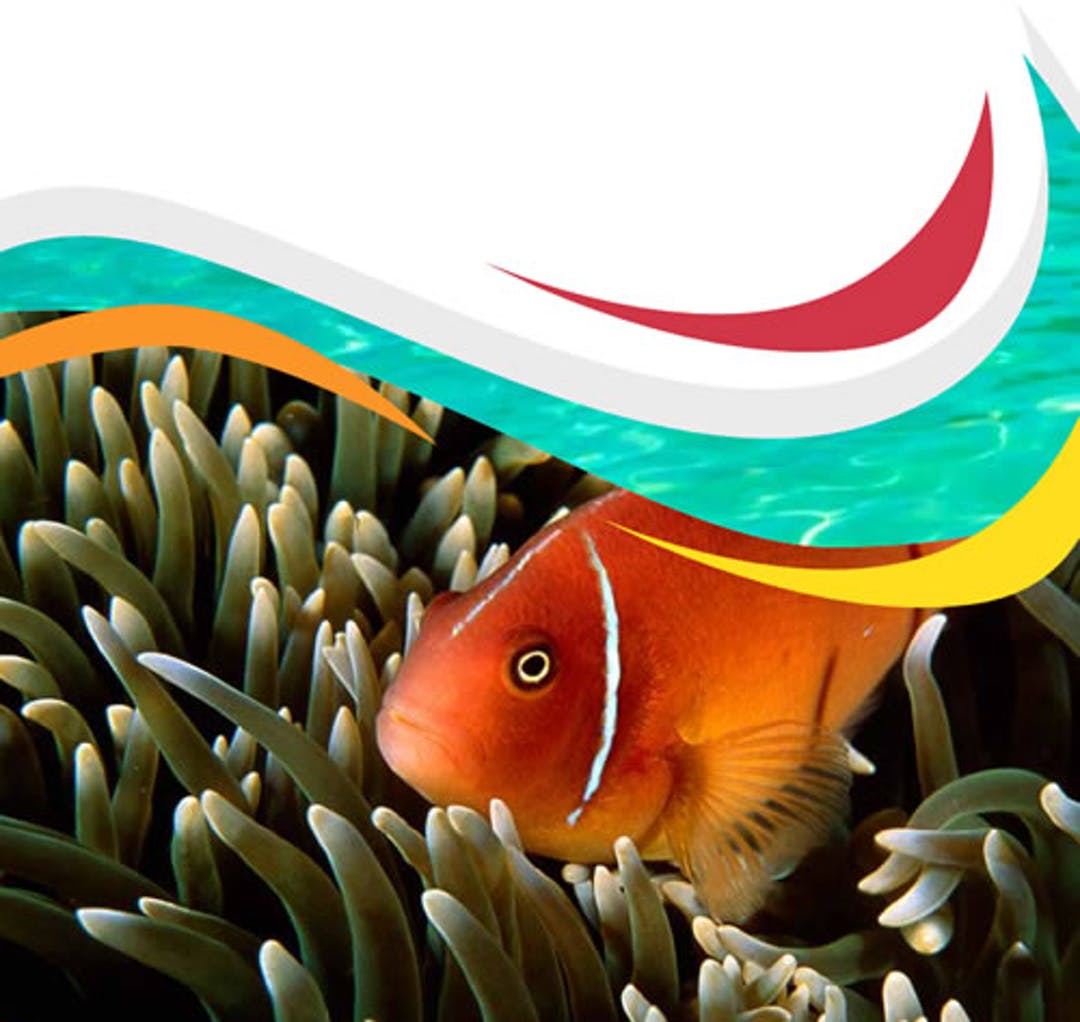 The Australian and Queensland governments are reviewing the Reef 2050 Long-Term Sustainability Plan, also known as the Reef 2050 Plan. This plan is Australia’s long-term strategy to protect and manage the Great Barrier Reef.
The Australian and Queensland governments are reviewing the Reef 2050 Long-Term Sustainability Plan, also known as the Reef 2050 Plan. This plan is Australia’s long-term strategy to protect and manage the Great Barrier Reef.
The plan sets clear actions, management goals, objectives and outcomes. These drive and guide the short, medium and long-term management of the reef.
The review and drafting of the updated Plan is being conducted by:
- Australian Government Department of Agriculture, Water and the Environment
- Great Barrier Reef Marine Park Authority
- Queensland Government Office of the Great Barrier Reef.
Scope of the review
The 2020 Review is the plan’s first 5-yearly review. The Federal Government would like to hear your thoughts on the:
- outcomes, objectives and management goals of the plan
- priority work areas
- strategic actions that deliver outcomes for the Reef.
The Government are seeking your views on the updated Reef 2050 Plan to ensure it contains the right priorities and actions to support the health and resilience of the Great Barrier Reef.
Share your feedback
You can now provide feedback. Your input will help us update the plan.
To have your say:
- read the Reef 2050 Long-Term Sustainability Plan Public Consultation Draft
- read the Reef 2050 Objectives and Management Goals
- read the fact sheet
- take the survey now
Submit your feedback by 11.59pm AEST Wednesday 30 September 2020.
Doodle Comer Swamp Nature Reserve Draft Plan Of Management: Public Consultation
The Doodle Comer Swamp Nature Reserve Draft Plan of Management is available for review and comment.
Public exhibition of the draft plan provides an important opportunity for members of the community to have a say in the future management of Doodle Comer Swamp Nature Reserve. Comments close 28 September 2020.
This plan has been prepared using a new format and presented as 2 separate documents:
- The plan of management which is the 'legal' document that will be provided to the Minister for formal adoption. This is the document we are seeking your feedback on.
- The planning considerations document supports the plan of management. It includes detailed information on park values (e.g. threatened species and cultural heritage) and threats to these values. A summary of this information is in the plan of management.
Doodle Comer Swamp Nature Reserve encompasses about half of the Doodle Comer Swamp, an ephemeral wetland listed in the National Directory of Important Wetlands and the largest wetland of its type in southern NSW. The catchment for Doodle Comer Swamp is unregulated and the wetland has an unaltered water flow regime, now uncommon in New South Wales inland wetlands and of high conservation value.
When inundated, Doodle Comer Swamp attracts large numbers of waterbirds that use the swamp for breeding and foraging. When dry, the wetland provides habitat for the threatened bush stone-curlew, listed as endangered in New South Wales. Other threatened animals found include brolga and superb parrot. The reserve contains several threatened ecological communities such as Inland Grey Box Woodland and Sandhill Pine Woodland.
Doodle Comer Swamp is part of the Country of the Wiradjuri speaking nation and is part of a larger network of swamps and lagoons across the Riverina that formed a significant part of the cultural landscape, sustaining the Wiradjuri with an extensive range of resources for thousands of years. A diverse range of Aboriginal sites exist in the reserve and surrounding area and in 2016 Doodle Comer was declared an Aboriginal place recognising these values and the wetland's special significance to Aboriginal culture.
What is a plan of management?
Parks and reserves established under the National Parks and Wildlife Act 1974 need to have a plan of management. The plan includes information on important park values and provides directions for future management. The plan of management is a legal document, and after the plan is adopted all operations and activities in the park must be in line with the plan. From time to time plans of management are amended to support changes to park management. Visit: Doodle Comer Swamp Nature Reserve Draft Plan of Management - PDF, 2.3MB
The National Parks and Wildlife Act sets out the matters that need to be considered when preparing a plan of management. These matters are addressed in the supporting Doodle Comer Swamp Nature Reserve Draft Plan of Management: Planning considerations document.
Why is a plan being prepared now?
Since the park`s reservation in 2011, it has been managed according to a statement of management intent. After a park's reservation and before the release of its plan of management, a statement of management intent is prepared outlining the management principles and priorities for the park's management. This statement documents the key values, threats and management directions for the park. It is not a statutory document and a plan of management will still need to be prepared according to the National Parks and Wildlife Act 1974.
Publication of a draft or final plan will replace the statement of management intent for the relevant parks covered.
What opportunities will the community have to comment?
The draft plan of management is on public exhibition until 28 September 2020 and anyone can review the plan of management and provide comments.
When will the plan of management be finalised?
At the end of the public exhibition period in September 2020 we will review all submissions, prepare a submissions report and make any necessary changes to the draft plan of management. The Far West Regional Advisory Committee and the National Parks and Wildlife Advisory Council will then review the plan along with the submissions and report, as required by the National Parks and Wildlife Act.
Once their input has been considered and any further changes made to the plan of management, we provide the plan to the Minister for Energy and Environment. The plan of management is finalised when the Minister formally adopts the plan under the National Parks and Wildlife Act. Once a plan is adopted it is published on the Department website and a public notice is advertised in the NSW Government Gazette.
How can I get more information about the draft plan?
For further information on the plan of management please contact the Park Management Planning Team at npws.parkplanning@environment.nsw.gov.au.
How can I comment on the draft plan?
Public exhibition for the plan of management is from 26 June 2020 until 28 September 2020. You are invited to comment on the draft plan by sending a written submission during this time.
Have your say
Public exhibition is from 26 June 2020 to 28 September 2020.
You can provide your written submission in any of the following ways:
Post your written submission to:
Manager Planning Evaluation and Assessment
Locked Bag 5022
Parramatta NSW 2124
Email your submission to: npws.parkplanning@environment.nsw.gov.au
Make a submission online by using the online form here
Tollingo Nature Reserve And Woggoon Nature Reserve Draft Plan Of Management: Public Consultation
The Tollingo Nature Reserve and Woggoon Nature Reserve Draft Plan of Management is available for review and comment.
Public exhibition of the draft plan provides an important opportunity for members of the community to have a say in the future management of Tollingo Nature Reserve and Woggoon Nature Reserve. Comments close 28 September 2020.
This plan has been prepared using a new format which is presented as two separate documents:
- The plan of management which is the legal document that will be provided to the Minister for formal adoption. This is the document we are seeking your feedback on.
- The planning considerations document supports the plan of management. It includes detailed information on park values (e.g. threatened species and cultural heritage) and threats to these values. A summary of this information is provided in the plan of management.
Tollingo Nature Reserve and Woggoon Nature Reserve are significant as two of the largest remaining mallee remnants in New South Wales. The largely intact old-age mallee vegetation is rare in the Central West, which is mostly used for agriculture. The reserves provide habitat for the endangered malleefowl and other native animals.
Tollingo Nature Reserve is shared Country for the Ngiyampaa and Wiradjuri people, while Woggoon Nature Reserve is within Wiradjuri traditional Country.
What is a plan of management?
Parks and reserves established under the National Parks and Wildlife Act 1974 need to have a plan of management. The plan includes information on important park values and provides directions for future management. The plan of management is a legal document, and after the plan is adopted all operations and activities in the park must be in line with the plan. From time to time plans of management are amended to support changes to park management.
The National Parks and Wildlife Act sets out the matters that need to be considered when preparing a plan of management. These matters are addressed in the supporting Tollingo Nature Reserve and Woggoon Nature Reserve Draft Planning Considerations document. This document may be updated from time to time, for example, to include new information on the values of the park (e.g. new threatened species), new management approaches (e.g. a new pest management technique) or new park programs. Visit Tollingo Nature Reserve and Woggoon Nature Reserve Draft Plan of Management - PDF 2.3MB
Why is a plan being prepared now?
This plan of management will replace the statement of management intent which was approved in 2014. Statements of management intent are non-statutory documents which summarise the key values and management directions for a park.
Since reservation in 1988 and 1974 respectively, Tollingo and Woggoon nature reserves have been managed according to a statement of management intent. After a park's reservation and before the release of its plan of management, a statement of management intent is prepared outlining the management principles and priorities for the park's management. This statement documents the key values, threats and management directions for the park. It is not a statutory document and a plan of management will still need to be prepared according to the National Parks and Wildlife Act 1974. Publication of a draft or final plan will replace the statements of management intent for the relevant parks covered.
What opportunities will the community have to comment?
The draft plan of management and planning considerations are on public exhibition until 28 September 2020 and anyone can provide comments.
When will the plan of management be finalised?
At the end of the public exhibition period in September 2020, National Parks and Wildlife Service (NPWS) will review all submissions, prepare a submissions report and make any necessary changes to the draft plan of management. The West Regional Advisory Committee and the National Parks and Wildlife Advisory Council will then review the plan along with the submissions and report, as required by the National Parks and Wildlife Act.
Once their input has been considered and any further changes made to the plan of management, we provide the plan to the Minister for Energy and Environment. The plan of management is finalised when the Minister adopts the plan under the National Parks and Wildlife Act. Once a plan is adopted it is published on the Department's website.
How can I get more information about the draft plan?
For further information on the plan of management please contact the NPWS Park Management Planning Team at npws.parkplanning@environment.nsw.gov.au
Where can I see a printed copy of the draft plan?
Hard copies are available for viewing at the following locations:
- National Parks and Wildlife Service (NPWS) office, Camp Street, Forbes
- Condobolin Library, 130 Bathurst Street, Condobolin
How can I comment on the draft plan?
Public exhibition for the plan of management is from 26 June until 28 September 2020. You are invited to comment on the draft plan by sending a written submission during this time.
Your privacy
Your submission will be provided to a number of statutory advisory bodies (including the relevant regional advisory committee and the National Parks and Wildlife Advisory Council). Your comments on the draft plan may include 'personal information'. the Department complies with the NSW Privacy and Personal Information Protection Act 1998 which regulates the collection, storage, access, amendment, use and disclosure of personal information. See our privacy webpage for details. Information that in some way identifies you may be gathered when you use our website or send us correspondence.
If an application to access information under the Government Information (Public Access) Act 2009 requests access to your submission, your views about release will be sought if you have indicated that you object to your submission being made public.
While all submissions count, they are most effective when we understand your ideas and the outcomes you want for park management. Some suggestions to help you write your submission are:
- Write clearly and be specific about the issues that are of concern to you.
- Note which part or section of the plan your comments relate to.
- Give reasoning in support of your points – this makes it easier for us to consider your ideas and will help avoid misinterpretation.
- Tell us specifically what you agree/disagree with and why you agree/disagree.
- Suggest solutions or alternatives to managing the issue if you can.
Have your say
Public exhibition is from 26 June 2020 to 28 September 2020.
You can provide your written submission in any of the following ways:
Post your written submission to:
Manager Planning Evaluation and Assessment
Locked Bag 5022
Parramatta NSW 2124
Email your submission to: npws.parkplanning@environment.nsw.gov.au
Make a submission online by using the online form here
Limeburners Creek National Park, Goolawah National Park And Goolawah Regional Park: Public Consultation
Planning for the future –NSW National Parks and Wildlife Service is preparing a new plan of management for Limeburners Creek National Park, Goolawah National Park and Goolawah Regional Park.
These parks are in the traditional Country of the Dunghutti and Birpai Aboriginal Peoples. The parks play a fundamental role in the lives of local Aboriginal people, helping to maintain a tangible link to the past and enabling continued connections to Country.
The existing plan of management for Limeburners Creek National Park was written in 1998. The areas that are now Goolawah National Park and Goolawah Regional Park were formerly Goolawah State Park and Crown land. Initial community consultation about the Goolawah parks was undertaken in 2012, soon after they were transferred to National Parks and Wildlife Service.
Since this time large new areas have been added to the parks, including the intertidal zone on some of the beaches. There has also been a steady increase in visitors, and new recreational uses have become popular. Information about the values of the park has improved and new approaches to managing fire, pests and weeds have been developed.
Accommodating all of these visitors, maintaining the unique visitor experience and protecting the environment is challenging. Good planning is essential to manage increasing demand and provide sustainable visitor facilities and opportunities while minimising impacts and retaining the natural and low key nature of this beautiful stretch of coast. The development of a new combined plan of management will help to protect the parks' unique values and improve the effectiveness of how we manage the parks.
What opportunities will the community have to contribute to the development of a new plan of management?
Previous consultation, including a community forum, identified a range of issues important to the local community which will be considered in the new plan. It is now time to reach out and reconnect with our neighbours, stakeholders and local communities, as well as extending the invitation to the wider community of park users.
There are now 2 opportunities to be involved in the development of the plan of management for Goolawah Regional Park and Goolawah and Limeburners Creek national parks:
- During the development of the draft plan - register your interest below to receive updates and be notified of further consultation dates. Complete the form to provide your ideas on what you believe are the most important values of the parks and how they should be managed in the future. Your input will be used to draft a plan that reflects community values and aspirations.
- During public exhibition of the draft plan - there will be another opportunity to have your say when the draft plan of management is completed and put on public exhibition for 90 days. Anyone can submit comments on the draft plan during this time.
Register your interest
Complete the online form here to register your interest, provide initial input and be notified of further consultation dates. Tell us what is important to you about the parks and what you would like to see in the future. Comments close 30 October 2020.
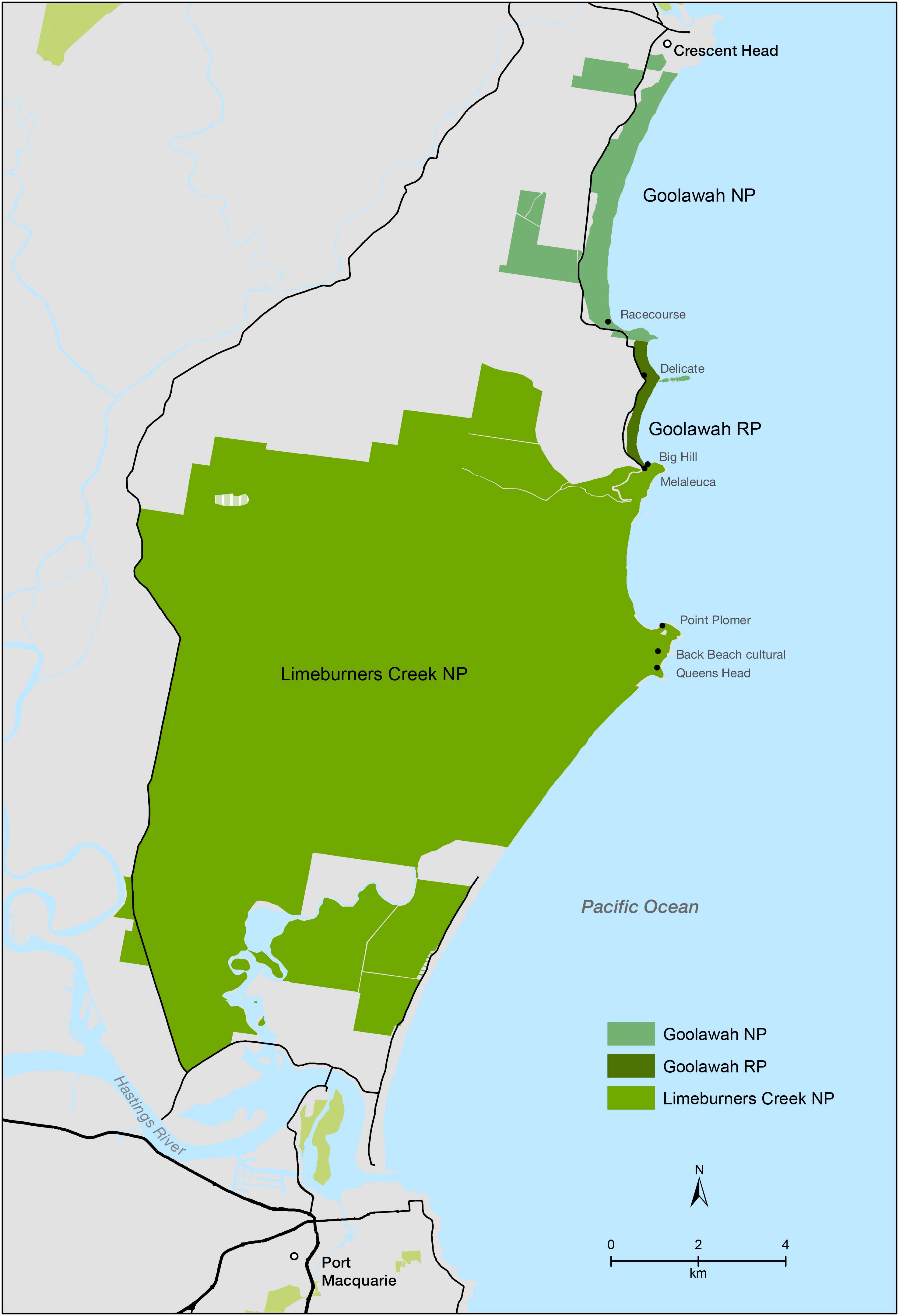
Limeburners Creek National Park, Goolawah National Park and Goolawah Regional Park engagement map Photo: DPIE
Echidna Season
Echidna season has begun. As cooler days approach, our beautiful echidnas are more active during the days as they come out to forage for food and find a mate. This sadly results in a HIGH number of vehicle hits.
What to do if you find an Echidna on the road?
- Safely remove the Echidna off the road (providing its safe to do so).
- Call Sydney Wildlife or WIRES
- Search the surrounding area for a puggle (baby echidna). The impact from a vehicle incident can cause a puggle to roll long distances from mum, so please search for these babies, they can look like a pinky-grey clump of clay
What to do if you find an echidna in your yard?
- Leave the Echidna alone, remove the threat (usually a family pet) and let the Echidna move away in it's own time. It will move along when it doesn't feel threatened.
If you find an injured echidna or one in an undesirable location, please call Sydney Wildlife on 9413 4300 for advice.
www.sydneywildlife.org.au
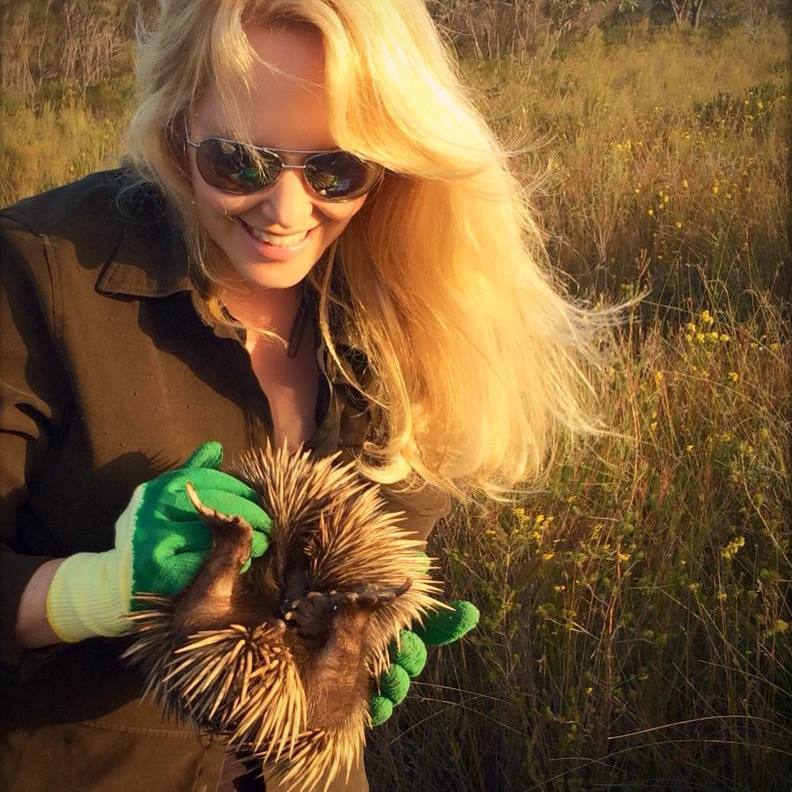
Lynleigh Greig, Sydney Wildlife, with a rescued echidna being returned to its home
 New Shorebird Identification Booklet
New Shorebird Identification Booklet
The Migratory Shorebird Program has just released the third edition of its hugely popular Shorebird Identification Booklet. The team has thoroughly revised and updated this pocket-sized companion for all shorebird counters and interested birders, with lots of useful information on our most common shorebirds, key identification features, sighting distribution maps and short articles on some of BirdLife’s shorebird activities.
The booklet can be downloaded here in PDF file format: http://www.birdlife.org.au/documents/Shorebird_ID_Booklet_V3.pdf
Paper copies can be ordered as well, see http://www.birdlife.org.au/projects/shorebirds-2020/counter-resources for details.
Download BirdLife Australia's children’s education kit to help them learn more about our wading birdlife
Shorebirds are a group of wading birds that can be found feeding on swamps, tidal mudflats, estuaries, beaches and open country. For many people, shorebirds are just those brown birds feeding a long way out on the mud but they are actually a remarkably diverse collection of birds including stilts, sandpipers, snipe, curlews, godwits, plovers and oystercatchers. Each species is superbly adapted to suit its preferred habitat. The Red-necked Stint is as small as a sparrow, with relatively short legs and bill that it pecks food from the surface of the mud with, whereas the Eastern Curlew is over two feet long with a exceptionally long legs and a massively curved beak that it thrusts deep down into the mud to pull out crabs, worms and other creatures hidden below the surface.
Some shorebirds are fairly drab in plumage, especially when they are visiting Australia in their non-breeding season, but when they migrate to their Arctic nesting grounds, they develop a vibrant flush of bright colours to attract a mate. We have 37 types of shorebirds that annually migrate to Australia on some of the most lengthy and arduous journeys in the animal kingdom, but there are also 18 shorebirds that call Australia home all year round.
What all our shorebirds have in common—be they large or small, seasoned traveller or homebody, brightly coloured or in muted tones—is that each species needs adequate safe areas where they can successfully feed and breed.
The National Shorebird Monitoring Program is managed and supported by BirdLife Australia.
This project is supported by Glenelg Hopkins Catchment Management Authority and Hunter Local Land Services through funding from the Australian Government’s National Landcare Program. Funding from Helen Macpherson Smith Trust and Port Phillip Bay Fund is acknowledged.
The National Shorebird Monitoring Program is made possible with the help of over 1,600 volunteers working in coastal and inland habitats all over Australia.
The National Shorebird Monitoring program (started as the Shorebirds 2020 project initiated to re-invigorate monitoring around Australia) is raising awareness of how incredible shorebirds are, and actively engaging the community to participate in gathering information needed to conserve shorebirds.
In the short term, the destruction of tidal ecosystems will need to be stopped, and our program is designed to strengthen the case for protecting these important habitats.
In the long term, there will be a need to mitigate against the likely effects of climate change on a species that travels across the entire range of latitudes where impacts are likely.
The identification and protection of critical areas for shorebirds will need to continue in order to guard against the potential threats associated with habitats in close proximity to nearly half the human population.
Here in Australia, the place where these birds grow up and spend most of their lives, continued monitoring is necessary to inform the best management practice to maintain shorebird populations.
BirdLife Australia believe that we can help secure a brighter future for these remarkable birds by educating stakeholders, gathering information on how and why shorebird populations are changing, and working to grow the community of people who care about shorebirds.
To find out more visit: http://www.birdlife.org.au/projects/shorebirds-2020/shorebirds-2020-program
Pittwater Reserves
Aussie Bread Tags Collection Points

Venom From W.A. Honeybees Found To Kill Aggressive Breast Cancer Cells
Pandemic Accelerated Remote Work; A Trend Likely To Remain
- A loss of social connectedness and loneliness for many employees, which can negatively affect performance and commitment to organisational goals.
- Increased risk among employees for substance abuse and addiction.
- Related to above issues, companies might need to create or augment employee assistance programs and hire staff trained to recognize mental health issues.
- The possibility that virtual work arrangements will foster more participatory relationships, given that physical cues of dominance are less salient in virtual environments.
- The need for human resource departments to develop new performance management and appraisal systems for remote-working populations.
- The expectation that some companies will institute new modes of surveillance due to perceived lack of control, now that employees are "out of sight."
Biodiversity: In A Mite-Y Bit Of Trouble
Heavy Electronic Media Use In Late Childhood Linked To Lower Academic Performance
These Lifestyle Choices Can Reduce The Risk Of Chronic Kidney Disease
Disclaimer: These articles are not intended to provide medical advice, diagnosis or treatment. Views expressed here do not necessarily reflect those of Pittwater Online News or its staff.
“Great White Sighting In Pittwater”: Art By Sea
(about: Art by Sea celebrates our natural environment with sustainable art by locals). Take a stroll along the pathway from Bayview to Church Point and cast your gaze further afield.
Visit: https://www.instagram.com/artbyseaau - more soon!
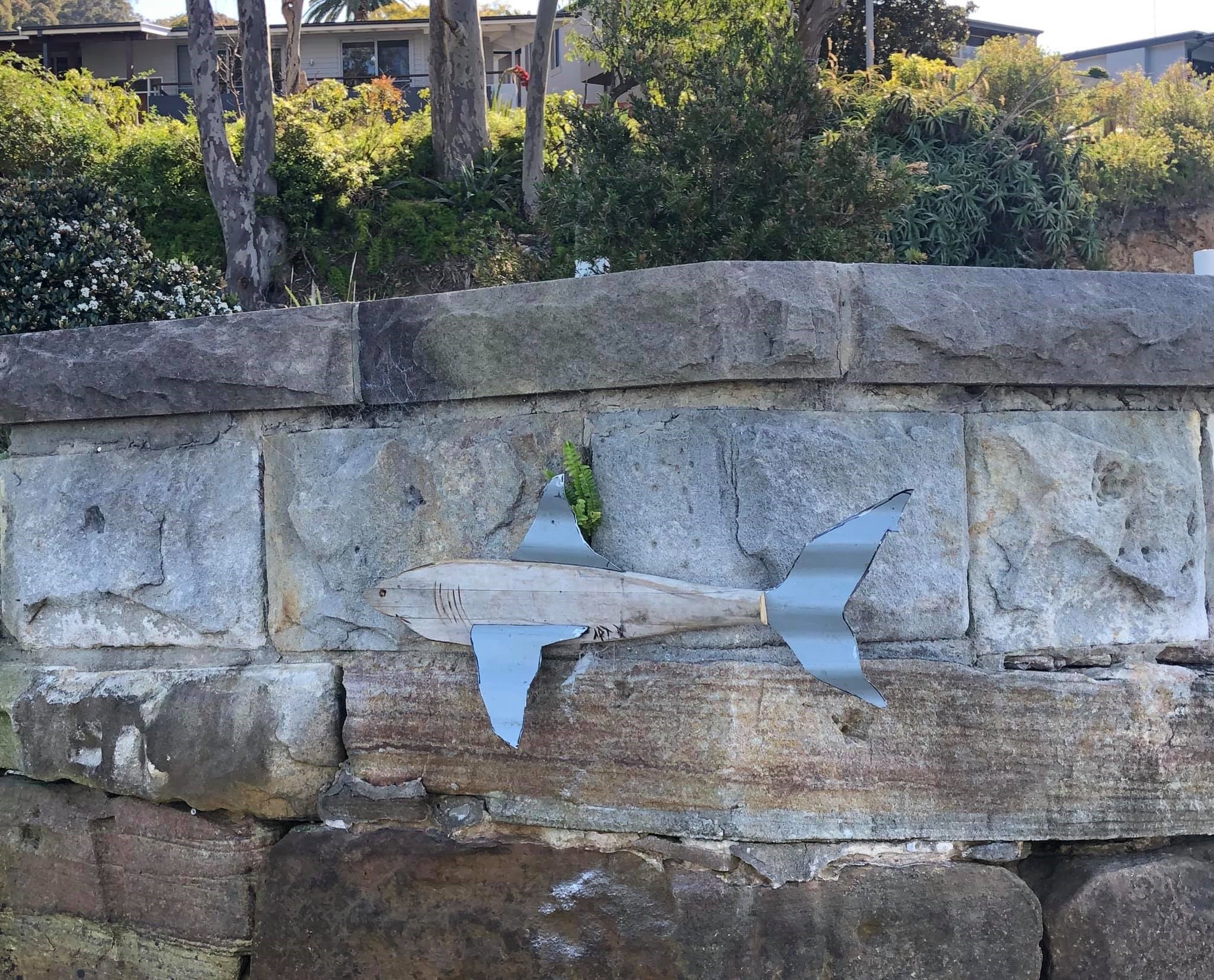
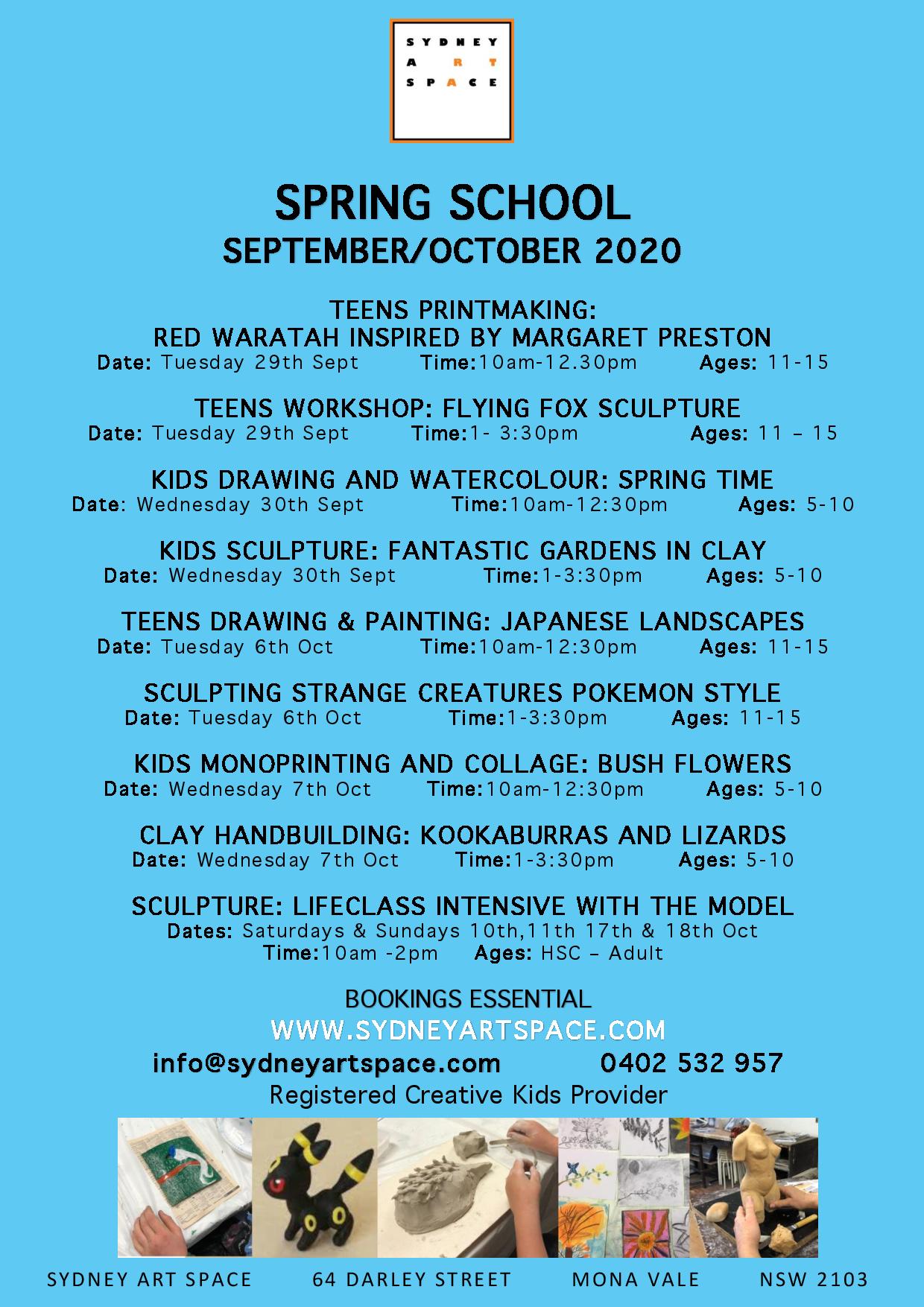
TAFE NSW LAUNCHES FIRST VIRTUAL OPEN DAY
September 3, 2020
As the HSC approaches, school leavers across the state are getting ready to take a break from the books to log-on to the inaugural TAFE NSW Virtual Open Day.
The first of its kind, the virtual event will combat social distancing barriers to ensure that prospective students don’t miss out on the opportunity to meet TAFE NSW teachers and explore the state-of-the-art facilities on 9 and 10 September.
TAFE NSW Regional General Manager Vicky Mazzeo said that school leavers, and their parents and guardians, will have unprecedented access to teachers from 60 course areas that are available for study across the state.
“The innovative virtual format of this event means that anyone who is considering their career options doesn’t need to travel to explore absolutely every opportunity available to them at TAFE NSW.
“COVID-19 has undoubtedly presented challenges for the Class of 2020 and I want to reassure school leavers that the pandemic isn’t an obstacle to getting the skills they need to pursue the career of their dreams.
“TAFE NSW is leading the vocational education sector by ensuring that all students continue to have access to training and information in a COVID-safe environment.”
Visitors to the event can connect one-on-one with teachers, take 360 tours of facilities, observe practical demonstrations, and access student support service and scholarship information in a virtual exhibition hall.
Ms Mazzeo said that accountants, call centre operators, administration assistants, marketing specialists, and software programmers are forecasted to be in demand over the course of the next twelve months and now is the time to consider the qualifications required to pursue employment opportunities.
“TAFE NSW graduates are in high demand because of the quality of their education and ability to hit the ground running with the job-ready skills that employers are looking for,” Ms Mazzeo said.
For further information and to register to attend the TAFE NSW Virtual Open Day visit tafensw.edu.au/open-day
Up To $1.5 Million Is Available For New Youth Opportunities Projects To Commence In 2021
Governor's Best Wishes For HSC Students
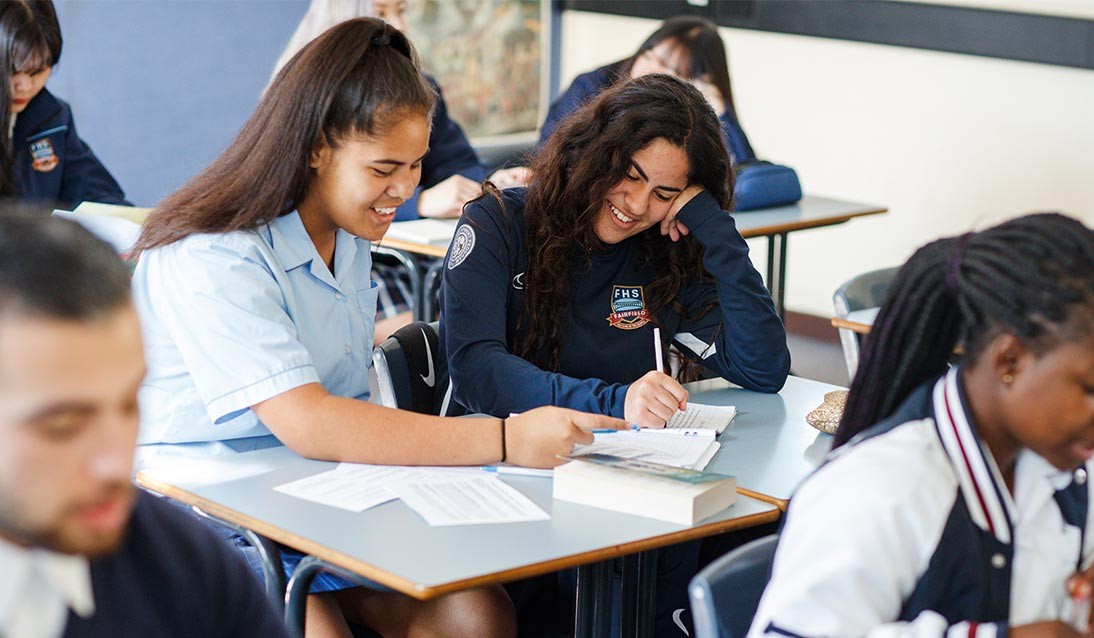
Students To Help Shape Future Of Education
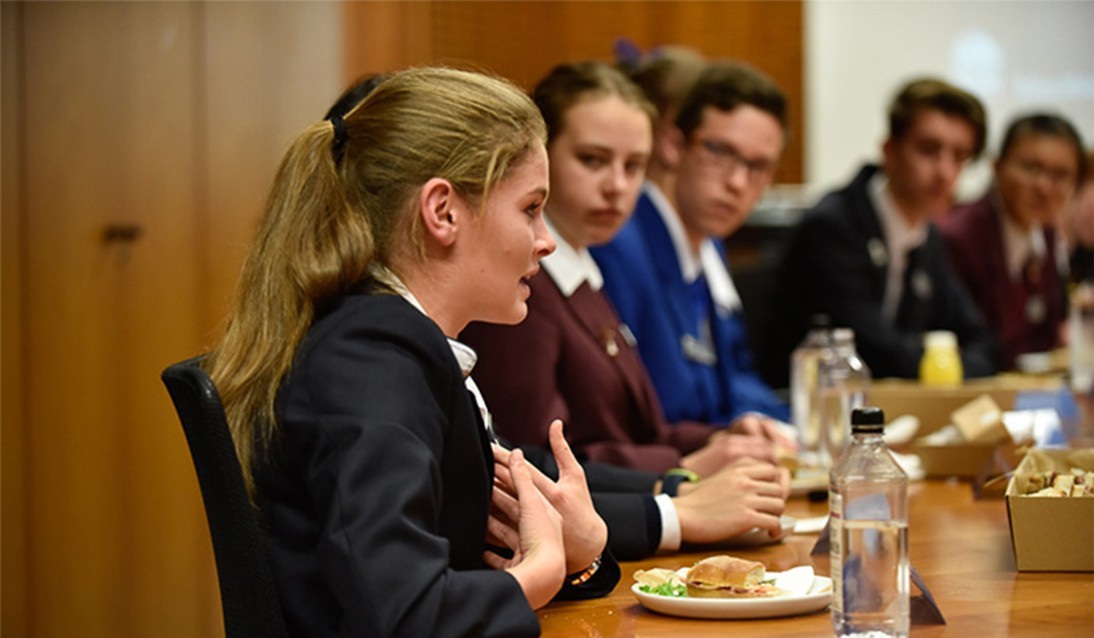
Olympians Empower Mental Health With Wellbeing Week
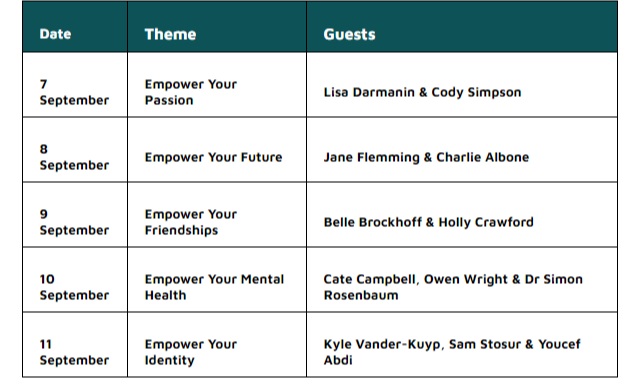
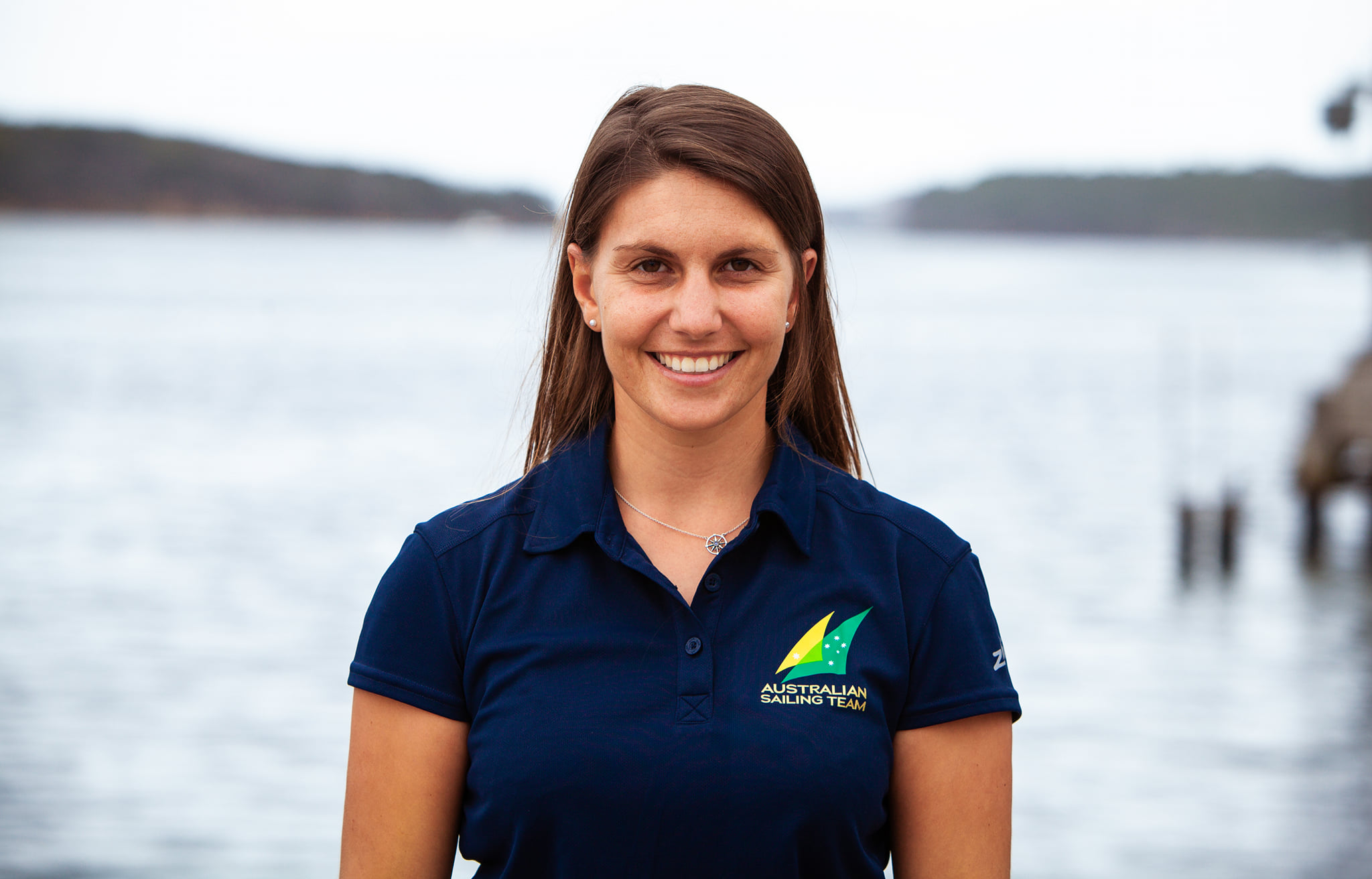
Opportunity: Students Encouraged To Apply For Award In Fisheries Conservation Research
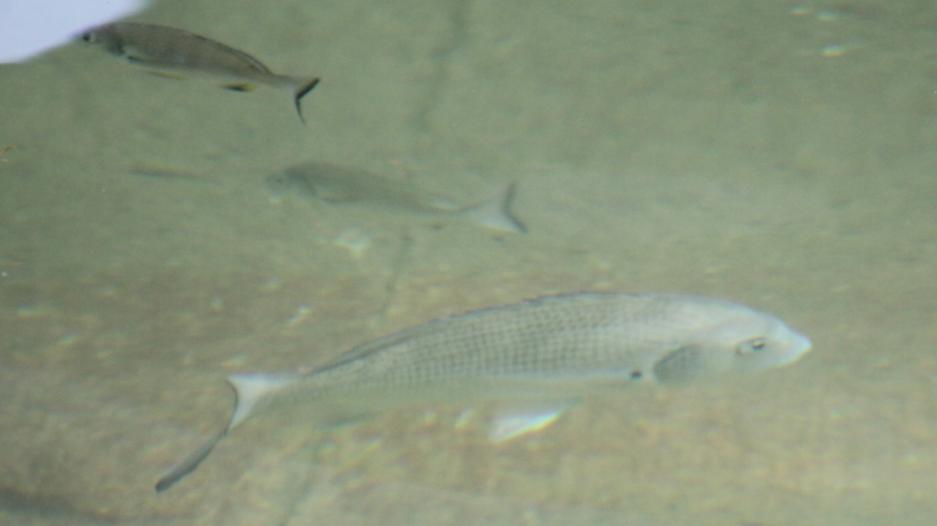
Competing in Birmingham, live from Mount Druitt: how hip hop moved online under COVID-19

In the South Bronx of New York City, in the early-to-mid 1970s, block parties started to incorporate much of the artistic elements of hip hop as we know it today.
On the streets between their apartment buildings, young African-American, Caribbean and Latino people would gather at parties in which graffiti art, breaking, DJing and rapping were taking place.
These block parties, writes American studies scholar George Lipsitz, were “an attempt to channel the anger of young people in the South Bronx away from gang fighting”. They would become a positive social, cultural and political force for many young people and their communities.
By the mid-1980s, hip hop had hit the mainstream with a force. Today, it is one of the most popular musical genres in the world. During the coronavirus pandemic – and with the resulting high unemployment, disruption to education, restricted travel and lockdown – hip hop has again become a vital outlet for many young people.
Instead of dancing on the streets, they are now performing online and across the world.
Connecting Online
As hip hop music and dance artists tend to gather in public places, the pandemic and lockdowns have heavily restricted these kinds of events. Many hip hop artists - both in Australia and internationally - have taken to social media to voice their frustration and disappointment with feeling cut off from this community.
Artists responded to the early stages of the pandemic by moving online. Zoom, Facebook, Instagram and YouTube provided a much needed social and creative outlet.
In July, Melbourne hip hop dancer Nadiah Biddle started running an online “Krump Dance” program for women. Krumping started in Los Angeles in the 1990s, and is now recognised for its expressive, exaggerated, and highly energetic movements.
Attracting dancers from across Australia and New Zealand through Zoom video-conferencing calls, Biddle teaches the basics of Krumping and leads students through choreography.
“The vibes have been really high”, says Biddle.
“The ladies have expressed to me that they feel so much more uplifted [after dancing] and that they always look forward to the classes.”
Sydney dancer Lowe Napalan recently won the The B-Side Hip Hop Festival organised by the Break Mission crew in the UK.
The annual festival takes place at Birmingham’s Hippodrome Theatre, but during the pandemic it moved online for the first time – opening up the competition to international artists like Napalan. He competed from the comfort of his own home in Mount Druitt via Instagram live.
Although he was on the other side of the world, Napalan says he had a real feeling of belonging in the event, just as if they had all been in the same room.
He set up his laptop in the living room to watch the other competitors and to film himself. It was a little strange, he says, because the music had to come through the laptop speakers, and there was some internet lag during some moments of the competition.
Nonetheless, it he found it amazing to compete on the international stage with some of the top breakers in the world.
The move online hasn’t just been for professionals. The Perth City Breakers, a collective of hip hop dance teachers and performers from Perth, started a hip hop dance podcast featuring local performers and an online training program for absolute beginners, giving people a new way to stay fit under lockdown.
A Global Artform
Hip hop is ever-changing, dynamic and globally diverse. While graffiti art, breaking, DJing and rapping are often recognised as being the forms core artistic elements, the label is much more expansive than that.
It encompasses a wide range of different musical and artistic practices, all of which are able to be expressed and transformed in ways that are local and unique.
Read more: Aboriginal hip-hop meets Iranian diaspora in a cross-border rap
In late July, for instance, Soundz of the South, a hip hop music collective based in Khayelitsha, South Africa, organised an open-mic event called Rebel Sistah Cypher. Eight South African hip hop music artists and poets each performed on a Zoom call live-streamed on the group’s Facebook page to raise money for Wave of Hope, a charity that supports refugees and asylum seekers living in overcrowded camps in Lesbos, Greece.
Hip hop is the representative voice of many young people, since the culture was created by and for them. It is a uniquely malleable, dynamic and empowering artform – and its adaptation to the pandemic is especially vital given creative outlets are so important for well-being.![]()
Lucas Marie, Early career researcher, Curtin University
This article is republished from The Conversation under a Creative Commons license. Read the original article.
Year 11 And HSC
- say you are a HSC student when taking a test
- ensure the nurse or doctor doing the test marks your referral 'urgent — HSC'
- self-isolate until a negative result is received
- show your school the negative result
- call the contact number provided by the clinic if results are not received within 36 hours.
- Allowing principals to decide on the number, type and weighting of school-based assessments for the HSC and Year 11 school-based assessment. NESA’s principles of assessment continue to apply. The deadline for schools to submit HSC assessment results and other marks is 23 September.
- Increasing the number of times Year 12 students yet to meet the HSC minimum standard can sit the minimum standard online tests.
- Cancelling the requirement for NESA mandated VET work placements.
- Dance - Callback
- Drama - OnSTAGE
- Music - ENCORE
- Visual Arts - ARTEXPRESS
- Technologies - Shape, InTech and TexStyle.
Western Sydney University Offering Free Online HSC Study Sessions
- Content analysis (including workbook)
- Tips and strategies across all modules/topics
- Detailed exploration of key syllabus areas
- Sample 2-hour practice exam
- Interactive webinar with a detailed analysis of each question, including provisions of annotations and exemplar responses/solutions
- Advanced English
- Biology
- Business Studies
- Chemistry
- Family and Community Studies
- Geography
- Mathematics Standard 2
- Legal Studies
- Modern History
- 2 Unit Advanced Mathematics
- Physics
- PDHPE
- Standard English
- Attend online sessions on subject syllabus and curriculm that you want to review
- Find out about HSC exam tips that will help you with your studies
- Practice on exam papers with experienced HSC markers
‘Help Harvest NSW' Launched To Help Secure Ag Workers To Bumper Harvest
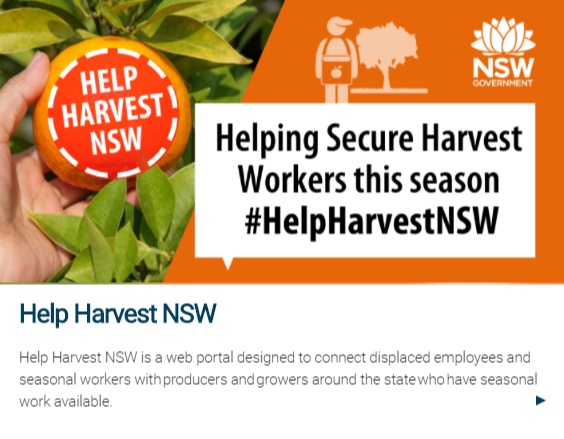 Farmers will be able to capitalise on what is predicted to be the best harvest in many years, with the launch today of a new one-stop resource which will help the agriculture industry overcome a COVID-induced labour shortage and get unemployed Australians into critical work.
Farmers will be able to capitalise on what is predicted to be the best harvest in many years, with the launch today of a new one-stop resource which will help the agriculture industry overcome a COVID-induced labour shortage and get unemployed Australians into critical work.Avalon Public School Supporting Cobargo Public School
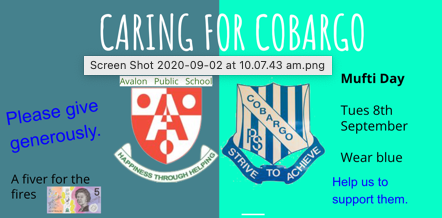 Cobargo Public School is at the centre of a community that sustained significant losses during the bushfires in late December 2019 and early January 2020.
Cobargo Public School is at the centre of a community that sustained significant losses during the bushfires in late December 2019 and early January 2020.
Avalon PS would like to help Cobargo Public School to support its community by raising money for them to build some gardens and attractive play areas for the students to enjoy.
A mufti day will be held on Tuesday 8 September. Avalon students are invited to wear blue, as this is the colour of the Cobargo school uniform, and donate gold coins or "fivers for the fires".
Money raised will go directly to Cobargo Public School to assist them with their gardening and landscaping projects.
On Saturday two students from this school were singing songs down in the village to raise more funds - well done and thank you.
What a great initiative from a great school!
New Playground and a Tips from an Olympic Basketball Legend
In other Avalon PS news their new soft-fall playgrounds have been completed and will open Monday - yay - looks fantastic!
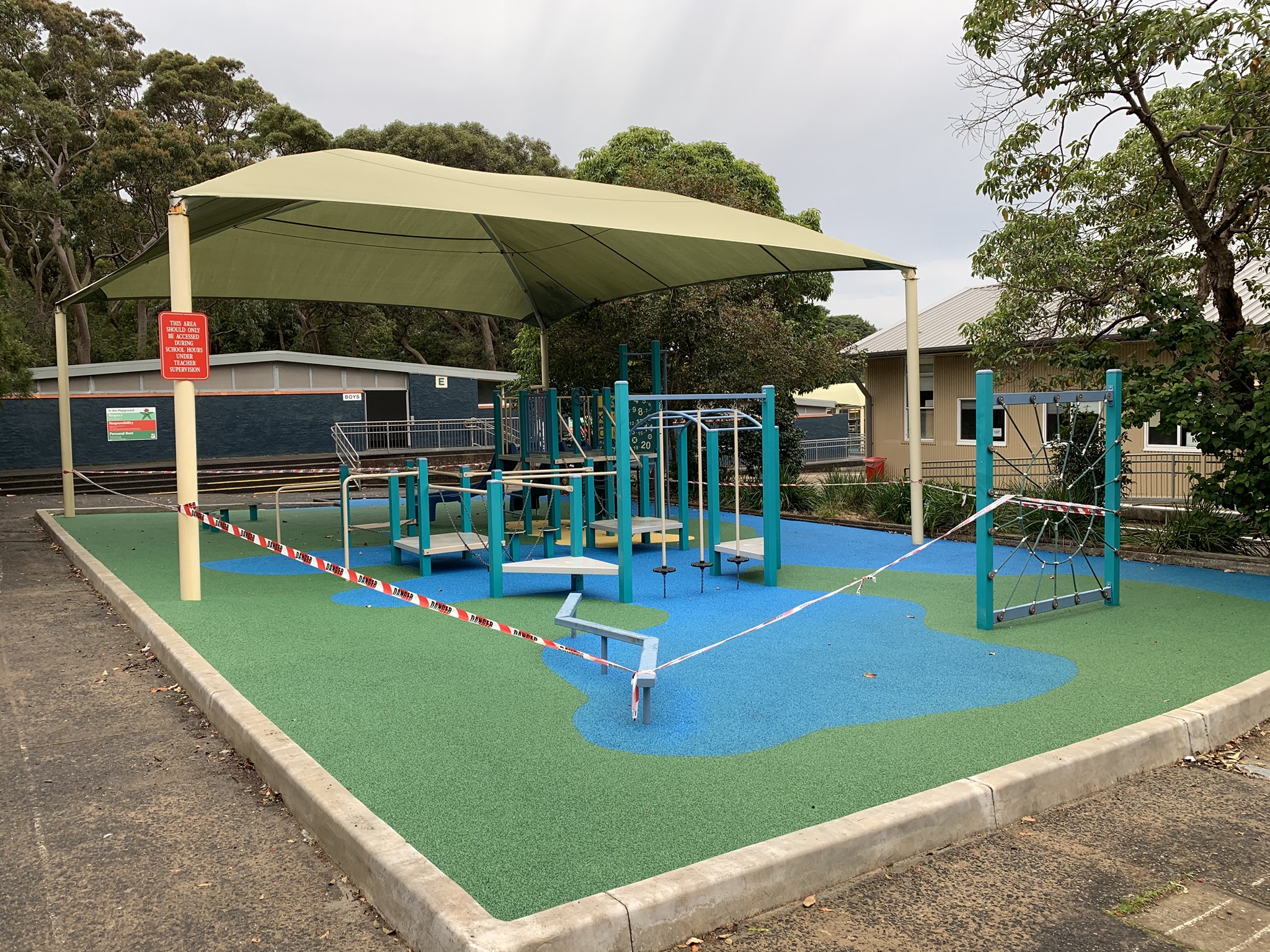
The school has also had a visit from Olympic basketball giant Brad Dalton this week to give them some great tips on a great game - Brad is a local player through and through - regular Readers will have seen some of the local basketball activities he has sent through in past years for you to get involved in this sport at Warriewood.
Brad started his playing days on the Northern Beaches where he played for Manly. He donned the NSW and Australian colours when he was selected in the respected Under 20’s teams.
Brad was a long servant in our national league, playing a mammoth 290 games with City of Sydney Astronauts, West Adelaide Bearcats, Sydney Supersonics, Geelong and Sydney Kings.
In 1978, he had the chance to travel the world with the Australian Junior Men’s team. He also took his talents to Europe where he played with and against some of the best.
He didn’t have to wait long for the Australian selectors to realise that he had immense talent. Brad was selected in the 1981 team due to some enormous performances in the lead-up to the Olympic Games.
Playing in the Olympics, the pinnacle of sport events, was always his number one goal and he had the opportunity to do so in 1984 at the Los Angels games and again in 1988 at Seoul.
Brad’s passion for the game of basketball has kept him in the sport following his playing career. Since stepping down from being a player, he has concentrated on his coaching of juniors, mainly through his involvement with schools, and at Warriewood as already said, and the Manly -Warringah Basketball Association.